Glen
Moderator
The Dominion of Southern America Timeline Discussion
Dominion of Southern America Timeline Part I
Dominion of Southern America Timeline Part II
Dominion of Southern America Timeline Part III
Dominion of Southern America Timeline Part IV
Dominion of Southern America Timeline Part V
Part III






























Chuen China found itself in a precarious position. Russians on their northern and eastern border were making greater and greater inroads into the far east, and one of the Chuen's Dynasty's greatest fears were a Russian backed Qing restoration. To their south, American, British, and French foreigners were welcomed to the radically westernizing United States of China, land Chuen China considered rightly part of the Middle Kingdom. The fear of missionaries bringing strange and radicalizing religions was counterbalanced with the fear of Western invasion should Chuen China take steps to stem such activities, with the greatest object lesson being the fall of greater Annam to the Spanish.
While Chuen China wished to restore tradition, they equally wanted to reform the bureacracy, and knew, whether desired or not, that they needed to modernize the military. But how to gain access to Western training and equipment without inviting their own downfall? The Chuen answer was to make alliance with a nation that had a modern army but no particular interests in the far east at the time, one that had not shown a strong support of missionaries in the past. And so began the influx of Prussian and Polish officers and the goods of Prussia-Poland into Chuen China.
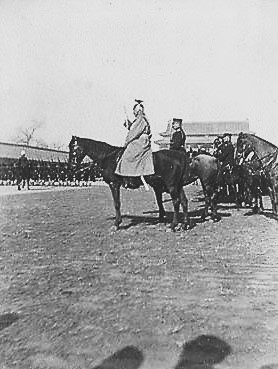







The great era of canal building in the Second Republic of Mexico (also referred to as the United States of Mexico) started with a joint project with the British. The first project was to improve the San Juan River, running between the Mexican states of Nicaragua and Costa Rica, to its origin in Lake Nicaragua. From there, a canal was build across the Rivas Canal to the Pacific, opening to traffic in 1861. While this first canal helped the British to link their Pacific interests with the Dominion of Southern America, it was only the beginning for Mexico. Mexican officials wanted a canal closer to the heart of the nation, and found investors in the United States for the great project of the Tehuantepec Canal, a canal with locks stretching over a 125 miles. This grand project was finished in 1878, and was able to handle twice the tonage of the Rivas Canal. The age was capped off with a more modest canal sponsored by a consortium of investors from Mexico, New Granada, and the United Provinces of South America that crossed the Isthmus of Panama.[/QUOTE]






Dominion of Southern America Timeline Part I
Dominion of Southern America Timeline Part II
Dominion of Southern America Timeline Part III
Dominion of Southern America Timeline Part IV
Dominion of Southern America Timeline Part V
Part III
The Empire of the Hapsburgs was a melange of peoples and politics, and the wave of liberation and nationalism that swept over the lands of the Austrian Emperor Ferdinand. The Italies were the first to rise up against the oppression of Metternich and his Emperor, but they were soon followed by the strong nationalist movement in Hungary. At the same time, Austrian liberals agitated in Vienna for greater rights as German nationalists argued for unification with the rest of the Germanies.
At first, the Emperor Ferdinand's loyal forces were able to squelch the Italian uprisings, but in Hungary they were less successful. Ferdinand sought to placate some of the less radical reformers by dismissing Metternich and his cronies and replacing with more moderate officials, but the government was simply wracked by short-lived government after government. The final straw was when France entered the Germanies against Prussia, causing Prussia to withdraw a previous offer of support to Austria. With France advancing, and the United Kingdom at best neutral and worst a poorly concealed supporter of the liberals, Austria had nowhere to turn but Russia.
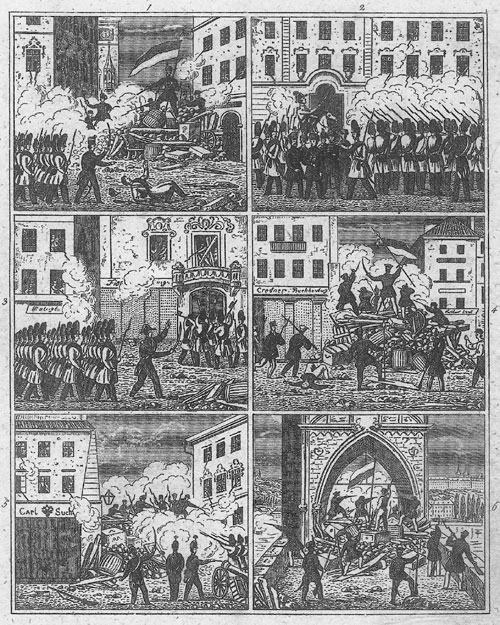
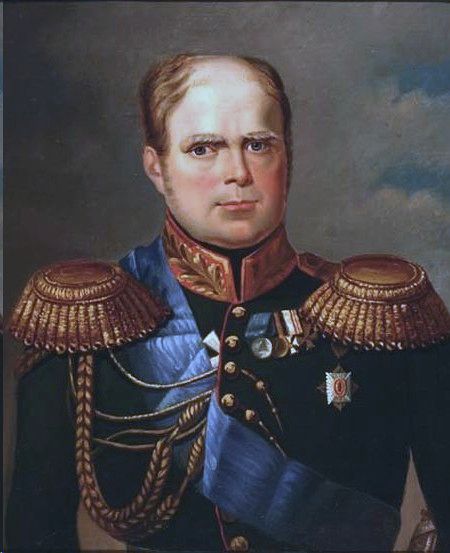
Tsar Constantine of Russia had started life with relatively liberal leanings, but these soon faded as shown in his brutal repression of Polish liberals in Poland before coming to be Tsar. As the troubles entering 1850 bubbled over, Tsar Constantine positioned himself as a champion of orthodoxy and conservatism. He stiffened the resolve of Prussia, even when they faced an expanding war now with France, and he answered the pleas of Austria with a virtual invasion of Hungary, forcing nationalist leader Lajos Kossuth to flee to the west. However, initially Russia could not extend itself too far, as uprisings in Poland, inspired by those in Germany and the Italian peninsula, also had to be dealt with.
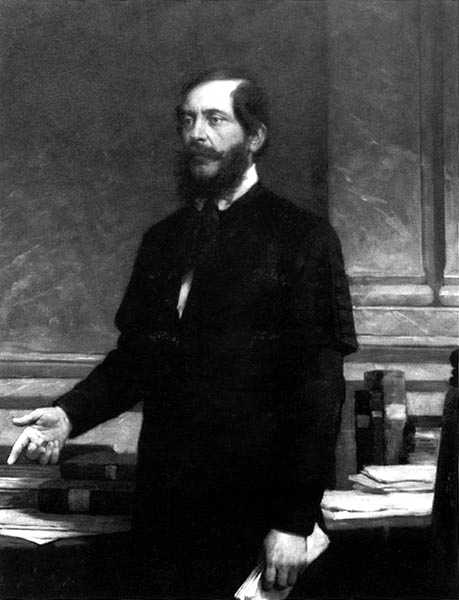
Some scholars believe the unpleasantness in China in the mid 1800s was the result of the Qing Dynasty's defeat at the hands of the British in the somewhat derogatorily named Opium War (granted, free trade as advanced by the British trade interests in the region did include the somewhat controversial opium). Other scholars contend that the Chinese black eye of the Opium War was a mere symptom of a deeper rot that became obvious a decade or so later.
In any event, while it is difficult to pinpoint exactly where the spark of chaos first was struck, if any one can be so implicated, it may have actually been the teachings of the itinerant American Deist preacher, Dennis Michael Murphy. Reverend Murphy was unusual for the Irish descended immigrants to the state of Nova Scotia (Murphy grew up in Halifax) in that instead of continuing with his ancestors' staunch Catholicism, he embraced the teachings of Deist Christianity (though some claimed his brand of Deism was closer to the 18th century variety, with little if any Chrisitan underpinnings). Murphy was a restless man, however. In the 1840s he began looking for passage on a Yankee Trader bound for the Orient, and eventually landed in China (though the precise year is not known).
Murphy, by all accounts a rather charismatic figure, found surprisingly fertile ground for his teachings (as well as his rather glowing reports of the American system of government) among both the poor lower classes of Southern China who chafed at Manchu rule and neglect, and a growingly disaffected group of Chinese intellectuals who in a western nation may have found themselves in prominent positions in trade or government, but in the undoubtably corrupt and restrictive Civil Service system of Qing China, could not break through the civil service examinations. Especially heavily represented in the early days were the Hakka people of Southern China.
While proportionately, few Southern Chinese truly embraced Deist Christianity, a larger percentage began to incorporate Deist thought into native Buddhist beliefs, laying the groundwork for Deist Buddhism.
The Qing government at first only harrassed the growing Deist (and crypto-republican) movement in the South, but eventually concern did waken in the bureacracy and Murphy was arrested and deported to British Hong Kong. However, Reverend Murphy, however, instead of taking ship to home, snuck back into China proper. While Murphy was passionate, he was less able as a fugitive and was recaptured and executed by the Qing authorities, along with several of his parishioners who were captured with him. A proclaimation at the same time from the Emperor declared Deism a forbidden belief. Both the United States and France protested the executions and proclaimation.
The 'massacre' (less then a score were actually executed) of Chinese deists became the rallying cry for the subsequent Southern uprising that broke out in 1850. A mixture of Deist true believers, disaffectived republican intellectuals, and disgruntled peasants, it would rapidly grow to encompass a nation. While Murphy would be honored as a teacher and martyr, his role was minimized in subsequent years in favor of native Chinese patriots.

The papal conclave of 1830 was summoned to choose the successor of Pope Leo XII. It would prove to be one of the longer and more contentious elections in the history of the church, but in the end the Austrian favorite, Cardinal Pacca, was chosen to ascend to the apostolic see (the fact that Austrian troops were massed on the border may have played some role in breaking the deadlock, it is rumored). He chose the name Pius IX upon his selection as pope. While considered the candidate of the moderate faction in the conclave, he drifted towards the conservative camp during his reign.
Upon Pope Pius IX's death in 1845, the conclave again had a difficult decision to make, but with the Austrian veto of liberal Mastai-Ferretti, it was the conservative, Cardinal Luigi Lambruschini who would become pontiff as Pope Leo XIII.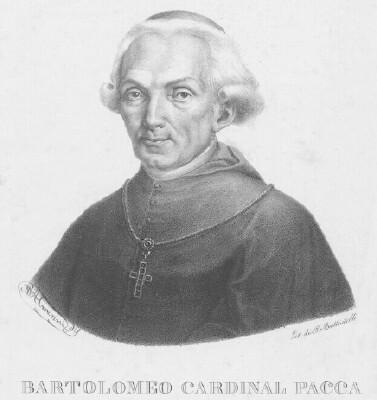
The regnal number of 13 proved unlucky for Pope Leo XIII, who was generally hated by liberals in Italy. When revolution broke out in Rome in 1850, he was caught trying to sneak out of the city as a stablehand, and was killed by an angry mob.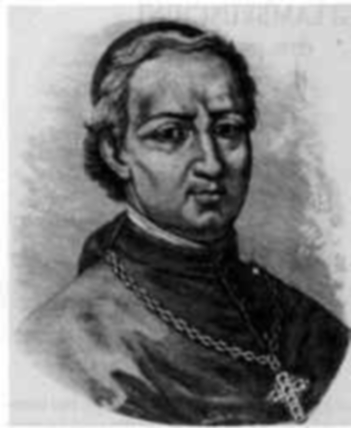
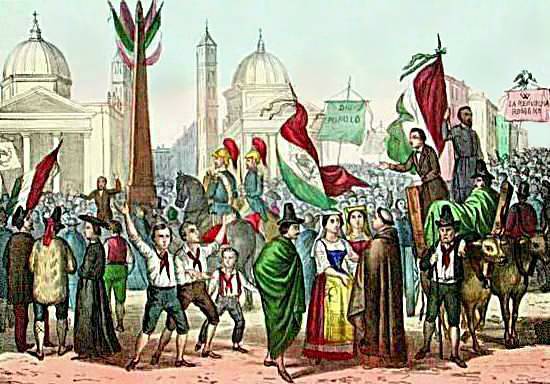
The death of the pope and the flight of so many of the clergy and Vatican officials left a power vacuum in Rome that was filled by the resurrection of the Roman Republic. The city and the rest of the papal lands were in an uproar in the wake of the pope's ignoble end, and an older, wiser head was sought to lead the new government, Carlo Armellini. Armellini did a superb job reassuring the populus and restoring order under the banner of the Republic, but with forces from France, Sardinia, Austria, and Naples moving toward the former papal lands, it was questionable whether the nascent republic would last out the year.

Appalled at the death of the pope,other nations moved toward the Republic of Rome to restore order. While Charles Albert lost for a second time against the Austrian forces in the northeast, his resistance slowed the Austrian advance enough that it was the forces of the Kingdom of Naples, led by King Achille, that secured the Republic, and perhaps more importantly, the cardinals in the region. King Achille's troops were soon bolstered by a French army. When the Austrians tried to push farther, their already bloodied forces were defeated and repulsed.
With French and Neapolitan armies holding the former papal states, the papal enclave could begin, though with a bare minimum of cardinals, given the chaos of Europe. Despite the war, France guaranteed the safety of Austrian cardinals passing through French occupied territories, though only a few took up the offer in time.
The papal enclave decided that, surrounded by liberals, it was time to choose a pope who could talk their language and perhaps be the last chance to save the papal states absent an Austrian victory, and thus was Cardinal Mastai-Ferretti chosen to be the new pope, Pius IX.

The Cologne Convention first convened in 1849 as the break-away Rhineland called upon other liberals and nationalists to rally to the cause of a liberal, united German state. It promulgated a new constitution, and was well on the way to recruiting many of the smaller states of the Germanies into a new German nation when the Prussians backed by Russians swept through Northern Germany. The representatives of the convention fled to the city of Hanover for a brief time, raising tensions dramatically between the Prussian and British crown. The French entry into the war in 1850 saw the Prussian spearhead flung out of the Rhineland. The convention again returned to Cologne to be about its work, but many of the members would not forget the gracious protection and encouragement that Duke George, Viceroy of Hanover, granted them.
With the removal of the convention from Hanover, and of Prussian troops from the Hanover border, the Prussians withdrew their ultimatum for turning over the parliamentarians, but a rift had clearly been created between the British and the Prussians, with the neutrality Britain held onto being definitely a hostile one.
With Russian reinforcements to the Prussians, the French advance stalled in 1851, with Germany only half free at that point. However, the British took this opportunity to offer their own ultimatum to Prussian - and Russia! Essentially, Britain demanded the withdrawal of Prussian and Russian troops from all non-Prussian territory.
The arrival of troops from Naples, France, and even a small contingent from Spain to the city of Rome proved a complication for the nascent Roman Republic. Spain was most concerned with the restoration of the new Pope to his proper dignities in the Holy City and the Papal States. The Neapolitans were much more concerned about the Austrians to the north and vacillated between wanting strong Roman state as a buffer and ally, or annexing the territory in part or whole to stave off the Austrians doing otherwise. The French were more nuanced in their approach, and served as broker between the Romans, the Papacy, and the other states with an interest there who were at least partly aligned with France, though also following their own agenda. Of course, France was also the strongest power in the region, if a bit distracted by the events to the north.
In the end, the French brokered a compromise agreement that if not pleasing to any side, met the basic needs of all sides. The Roman Republic would continue, but with the Pope as the Head of State and with recognition of the church's possessions and supremacy over the Vatican itself, as well as the continuation of Church Law with respect to the clergy, though not the laity. However, there would be a popularly elected legislature, from which a secular Prime Minister would be chosen who would be the Chief Executive of the Republic. The Code Napoleon would become the law of the land for the people. A special commission would be established to develop a procedure for legal cases involving both clergy and laity. Catholicism would be the official religion of the nation, but freedom of conscience would be respected and religion would not be a bar to enfranchisement nor to holding secular office (even Prime Minister). While there were many other details to be worked out, this formed the basics of the agreement that brought Pius back to the Vatican, although it was commonly rumored that if the Austrians were to break through to Rome, the pope would repudiate the agreement. Austria, of course, was livid about the deal.
Flag of the Roman Republic after the Compromise of 1850:
The war for the fate of Europe would come to be known as the Liberal War.
France had on her side the Kingdom of Belgique, Kingdom of Naples, and the liberal revolutionaries of Europe, but arrayed against them were the forces of Russia, Prussia, and Austria. What had started as a reaction to Prussian overreaching and to forestall Austrian expansion into the Papal States had become a war for the soul of Europe, and an existential threat to the Kingdom of France. The best hope for France and the rest of Western Europe lay in her old enemy, Britain.

While France fought valiantly and well, making maximum use of their army's main rifle, that fired a hefty cylindro-conoidal bullet that had been inspired by the English rifles developed in the latter stages of the Slaver Uprising. The French muzzle-loaders through a heavier bullet than the Prussian needle guns, but the Prussian army was starting to adopt tactics from the German partisans that made the advantage of breech-loaders a significant factor. In addition, Russian troops were starting to bring more numbers to the Prussian lines, and the gains the French had made were in danger.

The Cologne Convention had initially been pulled in many directions by the various factions in their nascent parliament, Catholic and Protestant, Nationalist and Liberal, those who favored concilliation with Prussia and/or Austria and those who wanted to stand alone. Early on, the debate had been regarding who to offer the crown of a new unified Germany to, Austria (favored by the nationalists, and the Rhinelanders and other Catholic states) or Prussia (favored by the liberals, and the other Protestants states). However, with the Prussian crown's embrace of conservatism and vigorous war against the liberals, it became clear that the Prussian king would not be a viable candidate. Similarly, as the Austrian Emperor eventually crushed liberal and nationalist aspirations in his domains using Russian troops, the Catholics and favorers of a Greater Germany also began to lose ground. But then a dark horse candidate began to gain popularity for the leader of a new, if more modestly sized Germany, German born George, Duke of Clarence and St Andrews and Viceroy of Hanover, nephew to the King of England. Duke George had been a friend to the liberals of the Germanies and the Colonge Convention since the beginning. Also, given that the aging King of Queen of England had only daughters, according to Salic Law he was the next in line to inherit the Kingdom of Hanover, another Germanic Kingdom to add to the new German Nation.
At first, the French balked at the idea of a scion of England on the throne of a new German state on its borders - unless it would bring the British off the sidelines and into the war on the side of France. Intense negotiations between the representatives of the Cologne Convention, the French, and the British eventually led to a new understanding between the British and the French. Already alienated by the reactionary and oppressive acts of the great powers of the East, Prussia, Russia, and Austria, the United Kingdom realized the best way to restore the balance of power in Europe was to side with the French and see the formation of a stable, liberal, Germany. Out of those discussions came the treaty that led to what the French called the Entente Cordiale. The treaty covered such disparate points as recognition of each others' colonial borders (for example, on the continent of Australia and the islands in the Pacific), the acquiescence of Britain to Hanover joining the new German nation, and the marriage of Duke George to the King of France's youngest daughter, Josephine.
And thus did Germany gain its Kaiser, George I, and Kaiserina, Josephine, and the Anglo-French alliance went to war against the Eastern Powers.

The 1850 Entente Cordiale established the borders between the French and British possessions in the Australias (previously referred to as New Holland and New Zealand). Greater Australia (formerly New Holland) was divided at the 132nd meridian, with Cygne Noir as the main colony of French Greater Australia, and New South Wales and it's capital, Port Jackson, as the heart of British Greater Australia. Lesser Australia was simply divided into the North Island of British Lesser Australia and the South Island of French Lesser Australia. Over time these names would continue to evolve, especially as new influxes of peoples would impact the land.

It was the entry of the British into the Liberal War that truly demonstrated the differences that technology were making in warfare. The British had learned numerous lessons from the Slaver Uprising in then British North America. One reform had been in officer training and promotion by merit rather than purchase. Another had been the adoption of breech loading rifles as the main armament of the infantry. The majority of British infantry entered the war with the Pattern 1847, but cavalry, reconnaisance, and raiders were equipped with the Thorpe Repeating Rifle utilizing a lever action. Not only had the British committed to breech loaders, but had gained the expertise in more unconventional tactics in the wilderness of North America to make them devastating against opponents who were slow to change their own tactics.


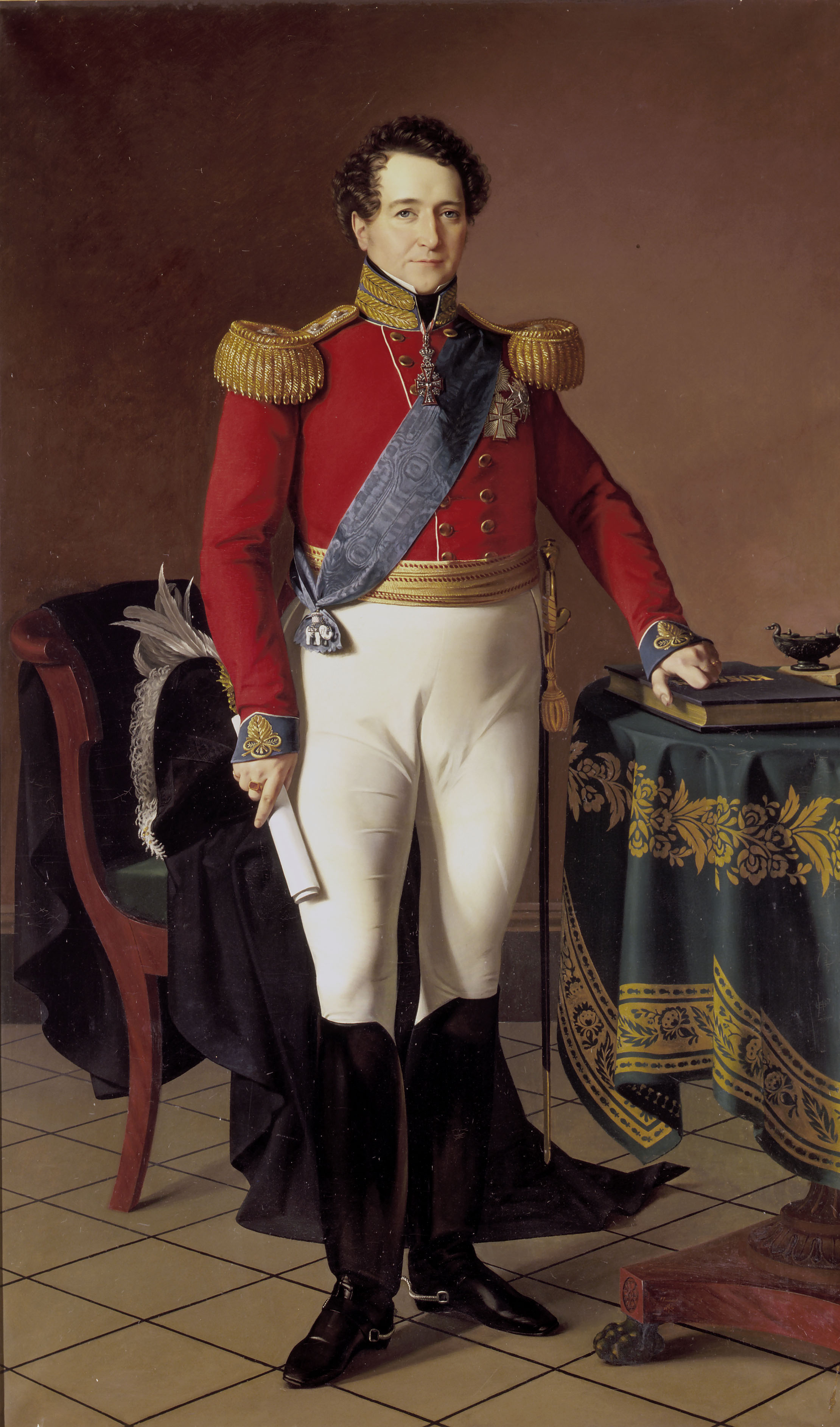
Christian VIII had started his career as sympathetic to liberal causes, but by 1850 he was King of Denmark but bound by the politics of the day to placate the conservative camp in his own nation, and compounding that was the rise of nationalism in Denmark over the past several decades. When the troubles in the Germanies broke out in 1849, many German nationalists called for both Holstein (predominantly German) and Schleswig (mixed but predominantly Danish) to join the new German nation. The Danish nationalists would have been content to let Holstein go its own way, but fought to hold on to Schleswig. The friction between nationalist camps over the borderlands, exacerbated by the lack of sons by the heir apparent, seemed to be pushing Denmark into the camp of the Eastern Powers, especially as Russia backed Danish claims most fully.

The entry of the British into the Liberal War cut off any hope in Russia that the fighting in Europe would be short, cheap, or easy. While the Netherlands were neutral, the rates they would charge for funding the war through loans was prohibitive, and of course Britain could fund their side with ease. And so Russsia found itself in need for funds in a hurry.
The United States of America, feeling flush from the gold rushes of the West Coast and the prosperous trade of foodstuffs to the Dominion of Southern America, was in a good position to offer Russia funds. The problem was that the only thing to unite the Democrats and Federals was their support for the Entente in the Liberal War, so a chance at a favorable loan was fleeting. However, the United States was interested in continued expansion of her frontier, and the once powerful Northwest Company was still a political force in Congress, and had long been stung by being shut out of Russian Alaska. Therefore when the Russians broached the idea of selling Alaska, it received a favorable hearing in the halls of Congress. However, the Americans drove a hard bargain, and the land of Alaska went for cents on the dollar of what it might have in less desperate times for Russia. The deal became known as the Pickering Purchase (sometimes the Pickering Steal) after the Secretary of State who brokered the deal, Charles Pickering.
While it had been a tradition from before the American Revolutionary War for Southerners to enlist in the British Army, and thus several individual Southrons fought in the Liberal War, before this time no completely Southern unit had fought overseas for the Empire (with the exception of the Sable Legion, though this was in Africa). George Turner of the Province of North Carolina sought to change all that. Colonel Turner raised the Southern Volunteer Regiment, nicknamed the Cavaliers, to fight in Europe in the Liberal War. Turner's Cavaliers would see action in the Germanies, launching raids deep into the lines of the Prussians and Russians. The Loyalist Yell they shrieked brought as much terror to their enemies as the wail of the bagpipes of the Scottish regiments they would face on the line.
A statue of Colonel Turner in Hanover
The Liberal War tied up many of the British Army regular units. One way London decided to deal with the needed increase in manpower was to reduce the number of British regulars patroling the borders of the Dominion of Southern America. However, Britain did not want to unduly tempt the United States or Mexico, and perhaps especially the remnants of the defeated Slaver Uprising within the Dominion, and thus reactivated many of the Loyalist Companies which had gained fame in fighting in the American Revolutionary War and the Southern Civil War, both the guard the border and to keep the peace at home. With a smattering of veterans to serve as leadership and training cadres, a new generation of Southern could prove their patriotism at home by joining one of the companies, and became a viable option for service apart from joining a regular British Army unit.

Schleswig-Holstein was a source of contention for many in the region. German nationalists wanted it for the new German state being forged in the fires of the Liberal War. Danish nationalists, while less concerned about Holstein, were adamant upon keeping Schleswig for Denmark, especially after losing Norway to Sweden's King Carl August after the Treaty of Kiel. The British and French were focused on the Great Powers of the East; Prussia, Russia, and Austria, and thus provided little support to the German irregulars operating in Schleswig-Holstein. The Danes were able to push out the Germans with little difficulty, but not before the Crown Prince of Denmark died in an attack while visiting the front. The grief-stricken King Christian VIII of Denmark pressed for recognition of a semi-Salic solution to the loss of his heir, by naming his eldest daughter's son by King Carl August II, Christian, Crown Prince of Sweden, his heir. However, this goal was complicated by two issues; the first being that Sweden had joined the West in fighting against Prussia and Russia, in hopes of regaining territories previously lost, and that the elder branch of the Schleswig-Holstein-Sonderburg-Augustenburg family argued that this semi-Salic solution negated any claim of Denmark to Schleswig-Holstein and that it would be solely under the Dukes of Austenborg (or Schleswig-Holstein as they would call themselves).
In the end, Christian of Sweden was named heir to both Sweden and Denmark in a deal brokered by the British (some said with a silent threat of unleashing the Royal Navy on the Danish Navy). Holstein would be allowed to enter the new Germany, but Schleswig would stay in Denmark. The Dukes of Austenborg would have duel standing in Denmark and Germany. The Danes would come over to the Liberals side in the Liberal War, putting further pressure on the Eastern Powers.
While Sweden and Denmark tended to retain their original flags prior to being united for local use, for more international uses a new flag was adopted, combining the two realms' flags into one.
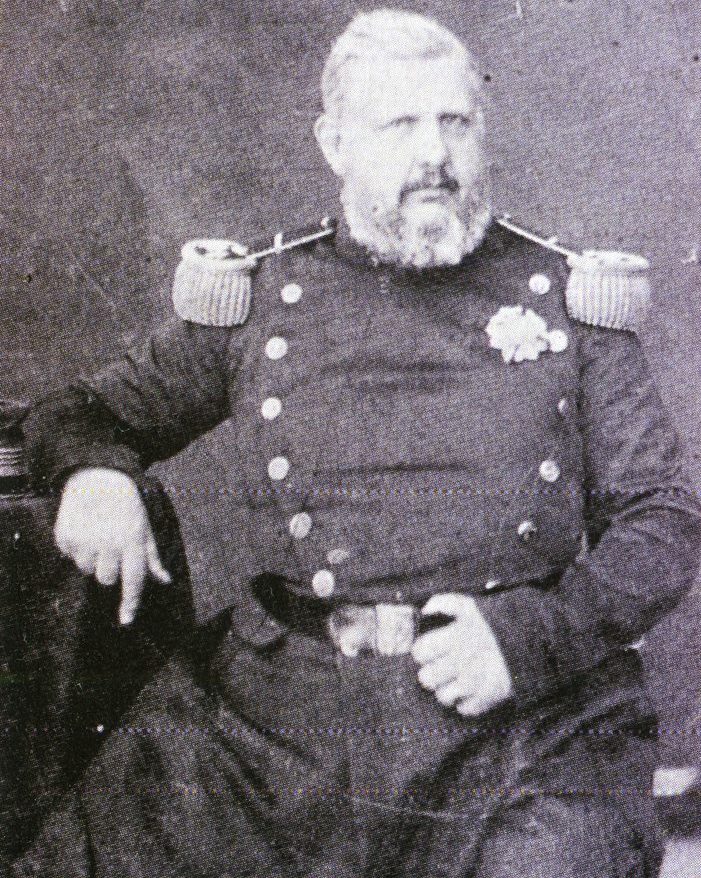
Ferdinand II
The Napoleonic Wars had split the Kingdom of the Two Sicilies into the Kingdom of Naples and Kingdom of Sicily. Sicily's king at the start of the Liberal War, Ferdinand II, had shown progressive leanings as a younger man, but had grown more conservative and paranoid as time progressed. In 1850, revolution broke out in the island, and when he refused to accept a liberal constitution, Ferdinand II was forced to abdicate in favor of his son who became King Francis II of Sicily.
With the (albeit tense) resolution of the situation in Rome, the forces of Naples, the new Roman Republic, the Italian states of the North led by Piedmont-Sardinia and Tuscany, and the French could focus on the Austrians and Russians in Lombardy and Venice. The concentration of forces was too much even for a general as able as Radetzky, and the third time proved the charm for Charles Albert as Entente forces expelled the Easterners from Northern Italy.
A constitutional convention in Florence called for the creation of a new Kingdom of Italy, comprised of all the Italian states and liberated Austrian lands north of the Roman Republic (which declined to join, a decision supported by the Kingdom of Naples). An active debate ensued as to who would be named king, but by precedence the only real choice was Charles Albert of the House of Savoy.
Thus the map of the Italian Peninsula would be transformed, with a new Kingdom of Italy in the North, a Roman Republic in the center (the former Papal States), and the Kingdom of Naples and the Kingdom of Sicily remaining in the South.
With the resolution of problems (at least for the moment), in the Roman Republic and Denmark, and the addition of Sweden to the Entente, the war surged forward, with Entente forces driving deep into Finland, Prussia, and Austria. It looked as if the Entente would take the capitals of all three nations in another year, especially with renewed uprisings in Poland and Hungary, until the Eastern Powers struck upon the heavy use of trenches and defensive maneuvers to slow the onslaught. The Entente was still on the attack, but the cost of the war in lives and materials jumped up exponentially for the Entente (though the Eastern Powers had already paid a hefty price in blood and treasure).
The cost of the war brought both sides to the bargaining table, but it was clear that the Eastern Powers were at the disadvantage, and they paid accordingly. Russia lost Finland to Sweden, though they managed to hold onto Poland. Prussia lost much of the portion of Saxony they had gained in the Napoleonic Wars, as well as all their territories west of the Elbe to the new German Empire. Austria lost much of the Sudetenland and the Tyrol to Germany as well. Austria also lost the Trento, Venice, and Lombardy to the new Kingdom of Italy.
Most of the changes of the Liberal War had settled down by 1855, and the world tried to get back into the business of living, though clearly a line had been drawn across Europe, with Reactionary Regimes to the East, and Liberal Realms to the West. This would define European relations for the age.
While there had been several suggestions for the Flag of the nascent nation of Germany, in the end the winner was a flag that paid homage to the three major states in the new German nation, Bavaria, Saxony, and Hanover. The tricolor combined colors associated with all three states (and reminiscent of those associated with the Rhineland as well). At the last, the White Stallion of Hanover was emblazoned upon it as well, perhaps in answer to the glaring eagles of the East.
Flag of Germany:
DEISMUSAfter the Liberal War and the formation of the Empire of Germany, there was a surge in liberalization throughout Germany. While the Kingdom of Hanover still had as its official religion Lutheranism, with King George as its head, the Empire of Germany of which George was Kaiser had no official religion, and in fact could not have without tearing the multidenominational state apart. While this was mostly to avoid conflicts between Lutherans and Catholics in Germany, the real impact of the new tolerance was to give room for expression of previously dormant or repressed faiths. Judaism was able to come out of the ghetto, for example. Deism, which had had a strong showing amongst the German intelligentsia in the 18th century, showed a resurgence, looking to France and even America as role models.
In the aftermath of the Southern Civil War, the back of the independence movement in British Southern America had been broken. There Slaver Planters who had sided against the Crown were, by and large, ruined financially, and their loose coalition of anti-indian, pro-independence, and pro-annexationists (US) shattered in the wake of defeat by the British military and Loyalist bands (including their armed blacks and allied indians of the civilized tribes). For the first few years after the war, many former Confederationists were simply too stunned to do much. By the time the sting of defeat had diminished, many former Confederationists were more interested in regaining their position in the new Dominion, but a few diehards rallied for a time. Disgruntled Southerners, many of them veterans of the Confederationist army, formed small groups who mostly vented their gall against more prosperous blacks and indians by attacking them under cover of night and wearing masks. The most vocal and vicious of these groups was the Scarlet League (perhaps a somewhat ironic name, given the fame of the Sable League). The Scarlet League used ambushes, bombings, and lynchings to strike terror into the hearts of non-whites in the Dominion. Their cowardly attacks rarely targeted white Loyalists, who were ascendant in the Dominion. However, this forebearance did not save the members of the Scarlet League and other secret groups of their ilk from reaping the wrath of Loyalists, many of whom formed Loyalist Leagues. The Loyalist Leagues would march through the towns and cities of the South, sometimes with members of the Scarlet League who had been captured in the act (either by sheriffs, constables, Loyalist League patrollers, or even black and indian self-defense units) tarred and feathered, and then either run out of town or, in the most egregious cases, themselves in turn lynched by their captors. By the 1850s, the last of the Scarlet League leaders had been captured, killed, or fled the country, though occasional lone wolf attackers would raise their ugly visage under the banner of the defunct Scarlet League.
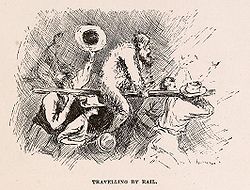
While the government supported efforts towards a transcontinental railroad in the DSA and the USA were somewhat slowed by political considerations, the same constraints did not apply to private efforts. Several Southern investors whose fortunes had managed to weather the turmoil of the Slaver Uprising (some of whom had at least sympathized with the Confederationists) saw an opportunity. Their proposed route relied heavily on connecting pre-existing rail lines running alongside the Gulf Coast, and then shooting straight west across the continent along a shortest distance (allowing for terrain route) just north of the border with Mexico to achieve the shortest route possible to San Diego. While it was started later than government efforts and chronically underfunded compared to the other transcontinental projects, it would remain in contention in the Great Transcontinental Railroad Race to the end.
The planned route (in red) of the Southern Pacific Railway:
Some say that the story of the founder of the United States Bureau of Security could only have happened in America.
Gene Vidocq was born in France and during his early life was a bit of a hellion. By the age of 15, he ran away from home with purloined funds that he used to purchase passage to the United States. He arrived in the State of Quebec with little more than the shirt on his back. Wild Vidocq might have been, but he was also very bright, and picked up English rapidly. Vidocq eventually enlisted in the Legion of the United States where he fought in the Old Northwest Territory against the native tribes there. He was noted as a clever and wily soldier, popular with his fellow soldiers, but he grew bored and deserted, becoming a fur trader for a time before drifting back to the towns of the Atlantic coast, and became a traveling entertainer, floating the travel routes between Montreal, Quebec City, Washington, and New York City. Vidocq himself claimed to have supplemented his income by running various frauds and cons, and in several instances was imprisoned, though he showed a true genius for breaking out of prisons. While a less than sterling figure in his youth, Vidocq was surprisingly devoted to his adopted nation, and when the war against Napoleon was declared, he rejoined the American Army under a pseudonym and participated in the invasion of the Northern Louisiana Territory. Again Vidocq was noted as a popular and effective soldier, but it was discovered that he was a deserter and nearly court-martialed, but he again eluded the authorities. A changing point in his life was when he saw the hanging of several former criminal colleagues, which made him desire to make more of his life. He started by offering to inform to local sheriffs on criminals in their towns, and in fact started to invent pseudonyms and disguises to infiltrate the desparadoes who ran the American underworld. He showed a strange sense of justice, claiming he never informed on those who stole or broke the law out of need, only for greed. Eventually, he settled in Quebec City and received a pardon from the Governor and a warrant to form a new concept, a plainsclothes police unit. Under Vidocq's leadership, this became a wildly successful endeavor, and he was invited to New York City to do likewise. This invitation proved timely as several allegations of abuse of power and even fraud were being prepared against him in Quebec. His police techniques in New York City became even more sophisticated, as Vidocq had embaced the zeitgeist of the times and become enamoured of the scientific method and essentially invented the field of criminology. His efforts in Quebec City and New York City eventually brought him to the attention of Washington, where the president charged him with creation of a national Bureau of Security to supplement the Marshals, both under the Department of Justice. His work drew international attention, both from police officials in British Southern America and in Europe, as well as his story inspiring several authors of both the Enlightenment and Romantic schools. Unfortunately, he continued to draw controversy and left Washington for Fort Finney in Wabash, where he started a private investigation business, the first ever. He had several high profile cases there on the frontier along the steamship routes, but in his elder years he again became restless, and sought to explore the great Western frontier. He was last seen in the 1850s, running ahead of the train routes, and was never seen or heard from again, though some legends claim that he became the chief of a renegade tribe of Indians who moved ever northwest, to escape the encroachment of civilization.
The greatest technological race of 19th century North America had some distinct ethnic associations to its various theaters of operation.
Dominion efforts in the Great Transcontinental Railroad Race, though split between the government supported efforts in the north of the DSA and the private route in the south of the DSA, would all start from both ends of the continent and slowly work its way to the interior. In the east, much of the workforce was comprised of free blacks, but there was a large need for workers in the far west, so the railroads did as the planters were now doing and brought in indentured labor from the subcontinent.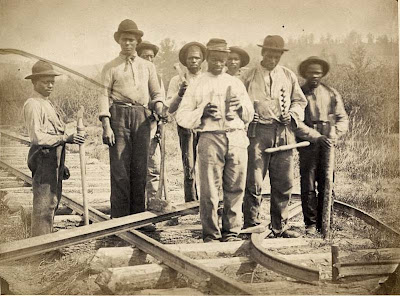
American efforts in the Great Transcontinental Railroad Race focused on a single route until the West, where the route would follow a northern and southern path to address the needs of the populations of Oregon and California. The railroad started to grow from both the East heading West, and from the West heading north, much as the Dominion was doing.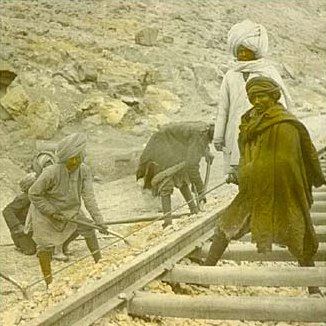
Along the frontier of the Eastern half of the United States, the effort would become associated with the Irish, who comprised the majority of the laborers. In the west, workers were even harder to come by, and so the American railroad companies took a page out of the British Empire's playbook and brought in indentured servants, but not from India. Instead, they would turn to China as a source of workers and thus the first major influx of Chinese would arrive in the American West.
Who would make the first transcontinental connection was a question of much debate over time.
The winner of the Great Transcontinental Railroad Race is still vigorously debated both on university campuses and in bars throughout the USA and DSA.
The British sponsored transcontinental railroad had started construction first, in 1846, with the American sponsored transcontinental response starting a year later, in 1847, the same year as the private "Southern Route" was inaugurated by Southern entrepreneurs. While the British sponsored railway had a head start, it was saddled with the need to build improvements and extensions east of the Mississippi to meet its political obligations. The American transcontinental railway had a greater breadth of the continent from coast to coast, but given the more developed railroads from the American Eastern Seaboard to Chicago, the amount of rail that had to be laid en toto was actually less, but construction on the American route was slowed yearly by the snows of American winter. The Southerner route took great advantage of the already existing lines along the Gulf Coast, had the shortest route of all, and no winter snows of note to deal with. Initially, it appeared to be a favorite to beat to the punch the politically hemmed in government routes. However, the private effort within a few years ran into financial difficulties, and over the course of its tulmultuous drive to the West, would change hands and owners several times. All three routes at certain points had to defend against attacks by Wild Indian Tribes. The Legion of America defended the American Route, the British Army the official Dominion Route, while a combination of hired guns and Royal Southern American Rangers provided security for the private Southern Route.
By 1853, it was suprising to see that the American and British Empire were essentially neck-and-neck in being able to complete their routes. With national pride on the line, both efforts strained mightily to be the first to complete the circuit. The British and Southerners first declared victory, but Americans quickly called foul, noting that the Southern route still had several unfinished railroad bridges over rivers on the route, using ferries to cross over these. Thus later in the year Americans claimed the credit for completing the first route fully traversible by a locomotive. However, before a train could actually perform the feat of traveling from East Coast to West Coast, unusually heavy snows closed the route. The Southerners worked throughout that winter to complete their river crossings on the route, and in fact were the first to have a train travel from the East Coast to the West Coast in the early 1854, with the route actually taken by this train east of the Mississippi was along the Gulf Coast. However, that train was one sponsored by the Dominion for the honor of claiming the title, and contained neither freight nor passengers. It was almost immediately thereafter that the Americans had the first commercial train travel across the continent (though at a financial loss, as the railway put forth a herculean effort to clear the last of the snows from the route to accomplish the task so early in the year). The Southerners quickly countered with the first passenger transport from the Coast to Coast.
Ironically, the financially tulmultuous Southern Route was finished a year later, in 1855, but would for several years thereafter become the most heavily traveled route of the three. In that same year, the final main branches of the other two routes (from Oregon for the Americans, and from Carleton for the Southerners) were completed as well. The completion of three full routes across the continent in such a short time would lead to a more rapid development of the interior and West Coast than many could have envisioned just a decade before.
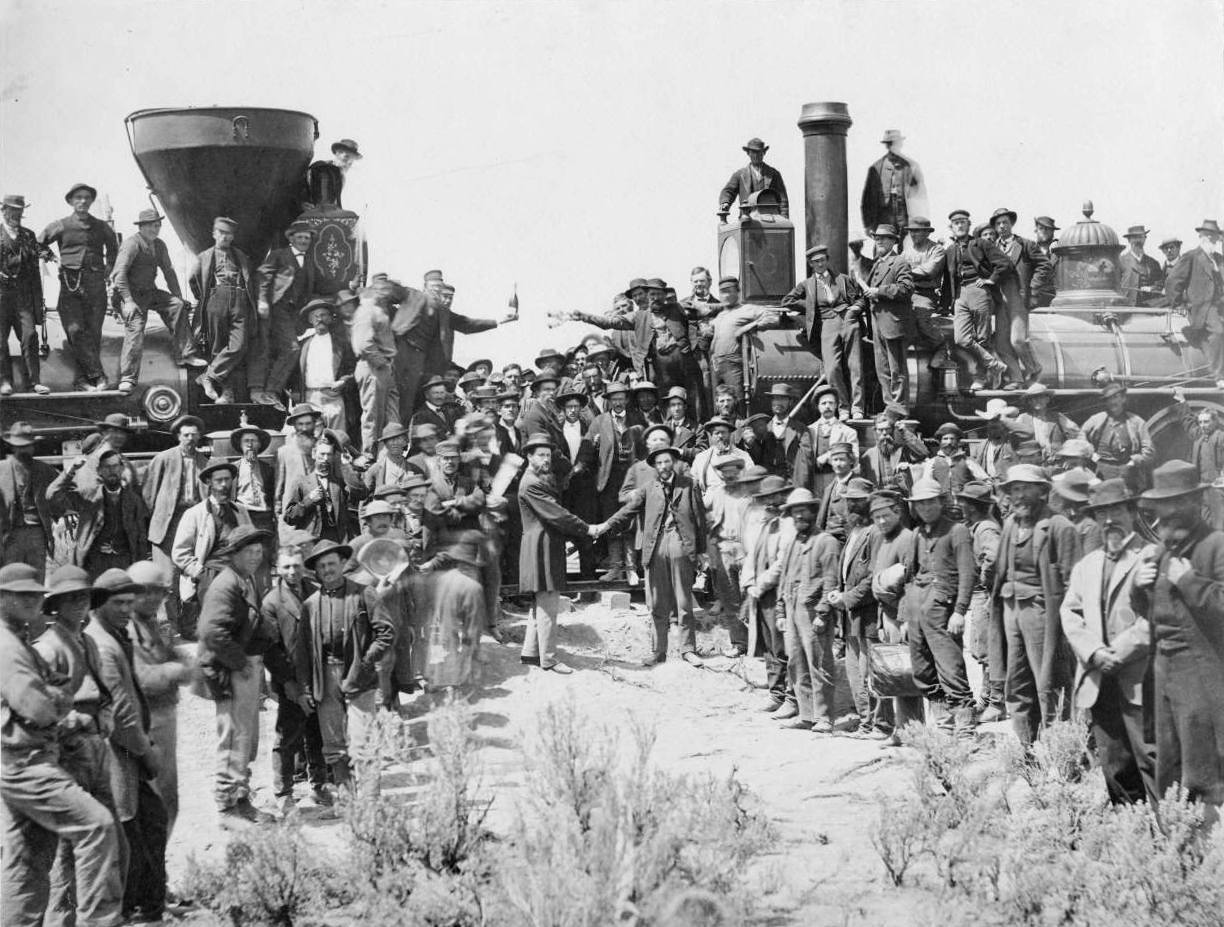
While the glib President Condorcet had been able to easily win reelection in 1844, the open election of 1848 saw the Democrats lose the presidency once more to the Federalists when Benjamin Hull Kays was elected to the office. The road to the presidency may have started as far back as two generations earlier, with President Kays' grandfather, John Kays. A Scotsman who had come as a child to America, John Kays joined the American Revolution and was notable for being an aide and bodyguard to then General Washington. John Kays eventually retired from the Continental Army and became a prominant farmer in Northern New Jersey. This may have been the end of the association of the Kays and George Washington if it weren't for the selection of the site of Kingston, New York for the new capital district for the United States. George Washington invited several of his old army veterans to visit the new District of Columbia, among them John Kays and his family. The Kays children would be frequent visitors to the capital city, and his son David became a prominant supporter of the Federalists, which he passed on to his son, Benjamin, culminating in his elevation to the highest office in the land.
Grave marker of President Kays' grandfather and bodyguard to General Washington, John Kays.
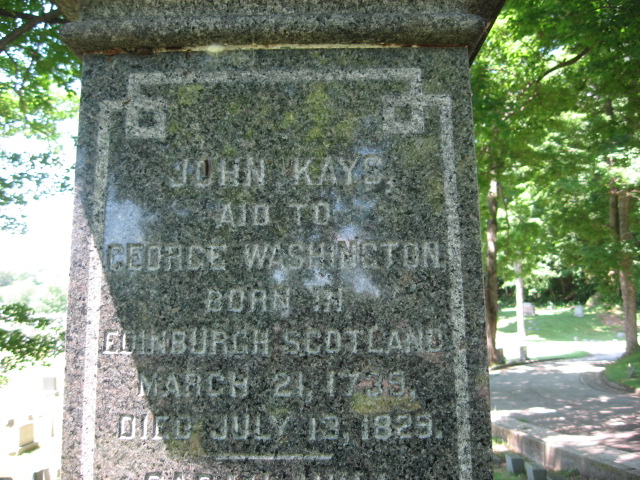
The first American woman to graduate medical school was a scion of that famous New Jersey family, the Kays. Doris Kays was the grandaughter of Revolutionary War veteran John Kays and the little sister of future President Benjamin Kays. She was among the first women to graduate from college, and the only one of her year to eventually go on to gain a degree in medicine, graduating by 1848, the same year her older brother was elected president. Her example was one of the shining lights in the Womens' movement as it entered high gear in the 1840s.
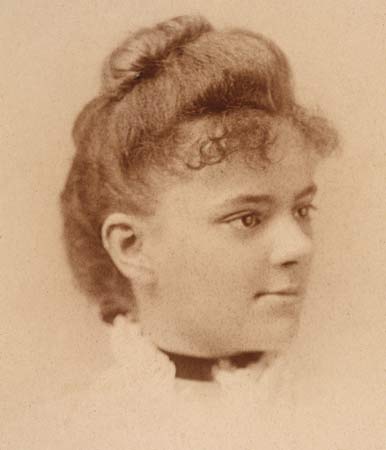
Though the gold rush in British California was small compared to that in the USA, it did attract some people to the region, and more were attracted with the nearing completion of a transcontinental railway route. Further, once the United States of America had the State of California enter the Union, British Californians were determined to achieve provincial status and be governed independently of Texas. Eventually, their petition was granted, but the question of what the name of the new province would be arose. Some thought some variant of California would be obvious, but they all were felt to define the region too much as not being US California. Instead, the founding fathers of the new province turned to English legends from the Age of Discovery and the name Sir Francis Drake gave to his landing on the west coast of North America for inspiration. Thus was the territory of British California replaced by the Dominion Province of Albion.
The last of the states straddling the Mississippi River to join the Union was the state of Minnesota, named after the river that comprised much of its southern border with the neighboring state of Mississippi. The naming of the state itself, while traditional in the region (naming after major lakes or rivers) was by no means certain, and many went back and forth before deciding on acquiescing on Minnesota. One of the major objections was the near proximity of so many states starting with the letter 'M' - Michigan, Mississippi, Missouri, and now Minnesota. However, other possible names like Red River or St Croix (even one movement to rename Mississippi as South Mississippi and then make Minnesota North Mississippi) failed to gain traction.
The state's southern border is the north border of Mississippi, comprised of the Minnesota and Mississippi Rivers. Where the St Croix River meets the Mississippi, a line heading due north to the westernmost tip of Lake Superior, and then following the lake to where the riverine system, including Rainy Lake and Rainy River, leading to the Lake of the Woods comprises the eastern boundary of the state. From where the 49th parallel meets the Lake of the Woods, heading due west until the 49th strikes the Red River of the North, runs the northern border of the state, and then southward upstream along the Red River of the North and then the Bois de Sioux River the border courses until the Red River comes nearest Lake Minnesota, and the shortest line to contect the two rivers completes the border.
It should also be noted that there was some talk early on of annexing the Lake Winnepeg region to the state, but the distance between the Minnesotan population which hugged the Mississippi and Minnesota River border in the south and the hardy Metis trappers and their families who claimed the Lake Winnepeg region made this an unlikely pairing.
With the admission of Minnesota as the 27th state of the United States of America, the flag of the United States looked thus.
This map of North America in the 1850s shows the 27 states and 8 territories of the United States of America of the time. It should be noted that during the Kays Administration, the naming conventions of US states and territories began to shift towards the names of the earliest Presidents of the United States. The Adams Territory was the remainder of the old Missouri Territory, comprised of land taken during the War of 1804, acquired during President Adam's tenure as president. The Jefferson Territory was the remainder of the Oregon Country, the final rights to which had been negotiatied in the Transcontinental Treaty by the Jefferson administration. Not coincidentally, the naming of these two territories meant one each was from the Federalist and Democratic (previously called Democratic-Republican) parties. For the remaining territories in the Southwest along the border, the Colorado Territory had already been named under the older nomenclature system, but some argued for renaming the territory using the presidential system. Shulze was the president under which the territory had been acquired, but it was felt that he was too 'recent' a president to name a territory after, and so some suggested that the territory be renamed Washington, for the founding president of America, as it seemed wrong to have territories named after other founding-father presidents but not the founding president. In the end, Colorado Territory retained its name, but a new territory was created out of the old Missouri Territory lands below the 40th parallel, which was named Washington Territory.

Prior to the major Women's Suffrage campaigns of the 1840s and 1850s, the only state to allow the vote outside of school boards was New Jersey (a state where women had had the vote since 1797). Suffrage supporters in the Democratic party focused on gaining the vote state by state. Their campaign had started to bear fruit first in Mississippi, where women were granted the vote in 1850. Minnesota followed suite upon achieving statehood in 1853. However, these were their only two victories in two decades.
Suffrage champions in the Federalist party focused their efforts on the more long term, but wide reaching, goal of a constitutional amendment granting women the vote nationwide. The first real push for national women's suffrage was promulgated by native son of New Jersey, President Benjamin Hull Kays.
The 1850s saw the spread of chaos throughout China. The uprising in the south had blossomed into a full-scale revolution. In the west, the Hui people rose up in a series of rebellions with poor organization except to the south, where General Yang had managed to attract a large number of followers to his war banner, and not just muslims.
In the southeast, the Revolution was a back and forth affair, mostly surviving off of local peasant support, donations from well-wishers in the West, and Qing incompetence and distraction. However, in 1853 the Revolution received new life with the series of victories achieved by General Shi, including cutting the Qing off from all of the Treaty Ports. While the Qing had seen the treaty ports as merely an insult, the Chinese Revolutionaries, having moved to approach western style attitudes towards trade, saw them as an opportunity to gain access to more Western supplies to fight the war.
General Shi was a rising star in the Revolution who had come from a prosperous family in the south, and rapidly became an emblem of the 'New China' due to his embracing of Western ways while also acting as a paragon of virtue. By 1854, many began referring to General Shi as the Chinese Washington.
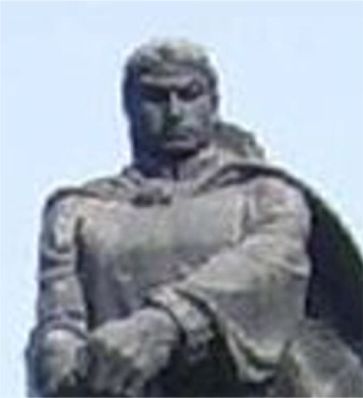
Japan had struggled valiantly throughout the 19th century to ward off European intrusion into Japan. Their perceived greatest threat was that of the Russians occupying neighboring Sakhalin island. The first half of the 19th century saw several overtures by the Tsar for an opening of trade rebuffed, until the disaster of the Ezochi rebellion in 1840 had forced the Japanese into some limited trade with the Russians through Ezochi, though even after this the Russians continued on and off to place pressure on the Shogunate for more concessions.
It is unclear what were the combination of factors that made 1855 so different from all the other attempts. Perhaps it was Russia's recent lack of success in the Liberal War in Europe that made the Russians to more aggressively seek success in the far east, yet at the same time made some Japanese brazen enough to resist the Russians with force of arms. In any event, the small Russian fleet that entered Edo bay that fateful year did not take a simple no for an answer. Under threat of the ships' guns, the Shogunate's government was torn as to how to respond - enough so that it led to open conflict between the factions, with the daimyo winning the immediate control in Edo and bringing everything they had against the Russian 'Black Fleet' who had earlier fired shells towards Edo as a show of force, but now laid waste to huge swaths of waterfront and beyond with their guns. The Japanese were able to gain a temporary equality with the use of fireboats that they sent careening into the ships in the bay. The Russians retreated that day, but would be back later that year with more ships and more troops, using Sakhalin as a staging point to invade the Japanese islands. Unfortunately for Japan, the violence in Edo had ignited a full scale civil war in Japan itself.
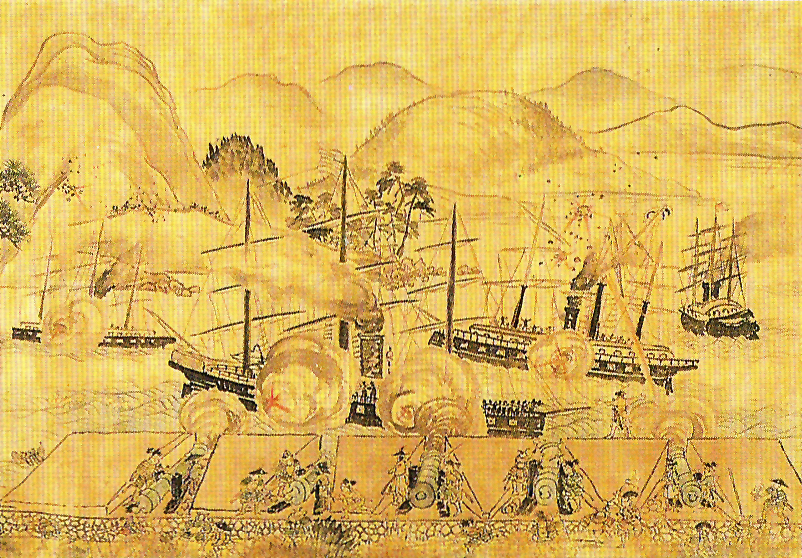
In 1855, things went from bad to worse for the Qing Dynasty. Fed up with the persistant presense of the Southern Chinese Revolutionaries and the inattention of the Manchu government to things such as relief from natural disasters in the north, traditionalist Han in the north rose up in an anti-Manchu, anti-Qing revolt of their own. They met with surprising successes, jumping from city to city. The only saving grace for the Qing was that the new threat against them hated the democratic, deist ways of the revolutionaries in Southern China as much as they hated the Qing and the Manchu yoke. The Qing set Mongolian forces to the task of reigning in these rebels.
However, the Qing were not so fortunate to keep the forces of General Yang based in Dali away from alliance with the forces of General Shi (who had become supreme commander of the Southern Chinese Revolutionary Army). With the guarantee of General Shi and the Chinese Revolutionary Congress of religious freedom, equality, and the end of Manchu domination, General Yang brought the southern Hui and other allied forces under his command into the Southern Chinese Revolution.
In the meantime, the Qing decided that they needed a 'modern' army to deal with the Southerners. They formed a new army under the training and command of European mercenaries which would come to be called The Devil's Army. The commanding general of The Devil's Army was an expatriot soldier of the Dominion of Southern America, Richard Stetson. The original American Stetson had settled in South Carolina after his service in the British Army in the American Revolutionary War. Despite this, Richard was somewhat of a rebellious sort for the family, and fell in with Confederationists during the Southern Civil War, joining the Confederationist Army at a young age. He served with distinction and was cashiered at the end of the dispute. He served for a time after the war as a guard on wagon trains heading west into frontier Arkansas. After the general amnesty seen with the formation of the Dominion, Stetson was joined the British Army for a time, rising up through the ranks, and jumping to officer, an unsual feat. He led troops for Britain in the Liberal War on the front with Prussia. With the end of the Liberal War he left the British Army after being passed up for further promotions that he felt were due him. He embarked on a 'world tour', and ended up in China where he was recruited by the Qing to train, and then lead, their new, modernly equipped, army. By 1856, the Devil's Army was sent south to battle the revolutionaries there, seen by the Qing as the more long term threat, and it is assumed, not fully trusting to have their foreign led army too close to the capital. This proved to be a prescient move by the Qing. While the Devil's Army had more successes in pushing back the Southern Chinese revolutionaries than any other force since 1852, Stetson could never quite defeat General Shi when their forces met, and Stetson found a growing respect for the chivalrous and canny Shi. Perhaps in hindsight it seems obvious that a Southern Rebel would find common ground with another Southern Rebel, but in early 1857 General Stetson and his entire Devil's Army defected to the side of the Southern Chinese revolutionaries.

The Japanese Civil War would prove disasterous for the island nation. The daimyo, mostly in the south, rallied around the Emperor, who had been anti-foreigner and particularly anti-Russian for years. The Tokugawa Shogun found supporters for his more open, councillatory approach to foreigners in the north, many of whom had looked the other way or actually actively supportive of smuggling between Japan, Ezochi, and Russian Sakhalin, not to mention the limited trade that had been allowed with the Russians legally through Ezochi since the 1840s.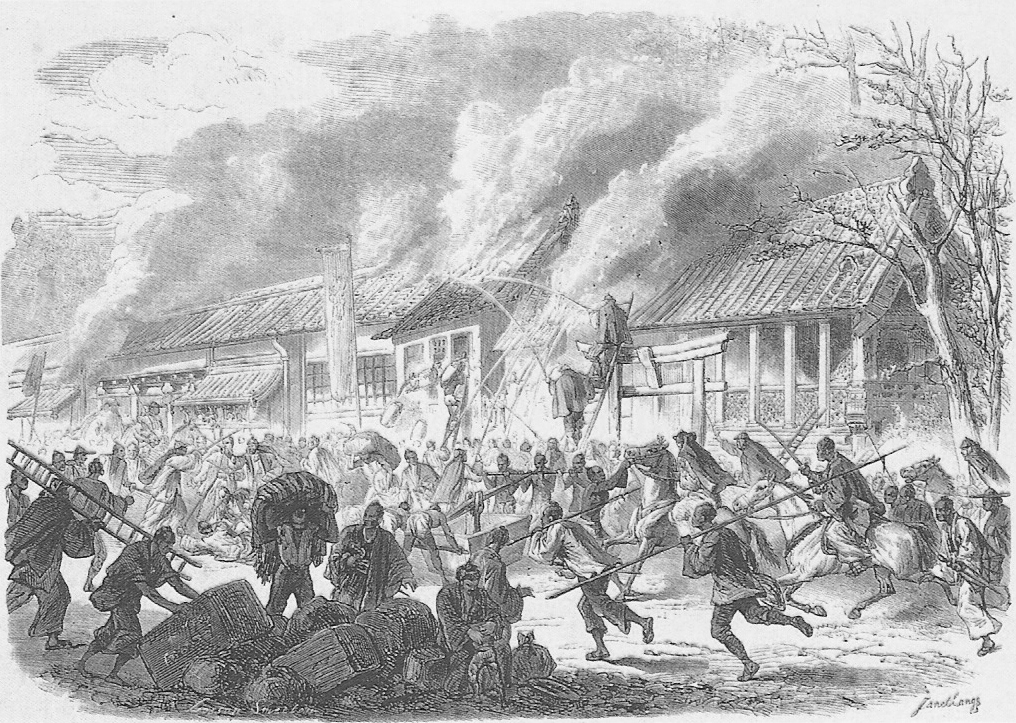
Initial battles went poorly for the Tokugawa faction, who were driven further and further north - until the Russians returned with force of arms. The Shogun allied with the Russian expeditionary force, making a treaty with the Russian Empire favorable to them, in return for Western arms and training, as well as direct support from the Russian military, especially the navy.
By 1857, the tide of war had turned dramatically, with Edo and the Emperor's court in Kyoto taken. In desperation, the daimyos and the Emperor turned to other foreigners - the Dutch initially, whom the Emperor had contact with in their one trade outpost in the far south, Dejima. They would fight fire with fire.
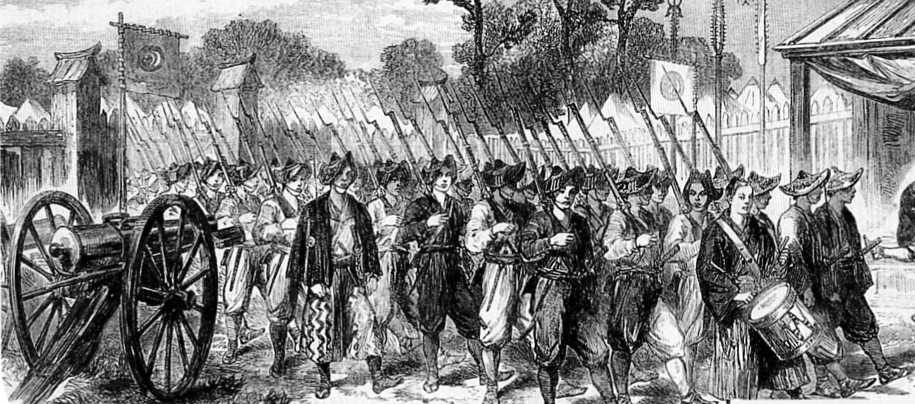

The Sepoy Uprising of 1857 came mere years after the end of the Liberal War, and was the final nail in the coffin of the British East India Company (BEIC). The timing of the Uprising was in large part a reaction to a prophesy popular among disaffected Indians of the mid 19th century that the rule of the British East India Company over India would end 100 years after it started in 1757. Whether the outcome of the Sepoy Uprising meant the prophesy had been fulfilled is open to debate.
There were several reasons for the uproar of the uprising, such as the Doctrine of Lapse which had brought so much territory under the direct rule of the BEIC, and the moral reforms that the British enforced upon the Indians such as the ending of Sati and child marriage.

The troops who remained loyal to the BEIC were able to squash the uprising with only a minimum loss of civilian life, much of this due to the rapid arming of loyal forces with newly arrived breech-loading rifles, and a lack of coordination between Muslim and Hindu rebels. Many of the forces that restored order were Sihk, who by-and-large remained loyal to the BEIC. However, the cost in treasure to the BEIC who had been on the verge of bankruptcy after decades of financial mismanagement, and the general poor press they received in Britain over the loss of control was the death knell to a privately run India. After the investigations of the uprising concluded, the British Government bought out the failing shares of the BEIC, and India became a Crown Colony of the British Empire.

King George the Fifth died quite suddenly at the age of 52 in the year 1858. His eldest daughter, Elizabeth, born in 1837, would thus ascend to the throne of the United Kingdom at the tender age of 21. This formalized the separation of the personal union between Hanover (now part of Germany) and Great Britain. While her father had come to side with the Liberals during the Reform Revolution as a matter of practicality, Elizabeth naturally leaned toward them. Thus when she was crowned Queen Elizabeth II, a new age was born, the Second Elizabethan Age. Elizabeth's reign would prove one of innovation but also controversy.

Hispaniola has a complicated history in the British Empire. After the Napoleonic Wars, the British administered both sides of the island as a single colony. The tensions on the island after the disasterous slave uprisings there were kept close to the surface for a generation or more. British colonial governors kept an uneasy peace there. Slavery remained until the 1830s, though there were many more free people, but the slave-owners of Hispaniola were as often gens de couleur or mixed race as they were pure European, and some were even free blacks. The upper classes that remained after the chaos of the war were French speaking in the west of the island and Spanish speaking in the east, but in general the slaves spoke their own creole. Over the decades, however, things would shift. English would, ironically, become the lingua franca of the next generation to share the island, and English terms would being to infuse the slave creole. Many of the free people of color of the island converted to Anglican and taught their children English, wanting to sever their relation with the hypocritical French who had fought for their freedom while fighting to keep people enslaved on the island. Some too of the upper classes would take on British ways as a means of advancement in the new order, and to fit in with the influx of British through the 1810s - 1820s. Still others, especially among the Spanish speaking easterners, clung to their language and their Catholic faith, or even left for Spain or the new Latin nations of New World.
During the Slaver Uprising, most members of Hispaniola acquiesced to the British mandate of emancipation and reaped the benefits of loyalty (many remembered the stories of their parents and grandparents of the last time freedom had been promised than denied on their island). By the time of the Uprising, Hispaniola had regained much of its profitabilit;, again a jewel of the Caribbean. While the Hispaniolans sent representatives to the first meeting on a proposed union of British Colonies in the New World, none of the factions that held the balance of power on Hispaniola felt that it was in their benefit to join with the rest of the British colonies, and decided to seek their own way. Most of the upper class whites of the island wished to remain a colonial territory under direct supervision from London, which they saw as a protection against possible unrest among the various factions of mulattos, spaniards, and free blacks, themselves divided by class. On the other hand, as the experiment with responsible government in the new Dominion of Southern America moved forward, seemingly with success, the proud Hispaniolans began to wonder if they were to be left behind, and more progressive elements in the various camps formed a loose coalition to seek not to join the Dominion of Southern America, but to have responsible government granted to Hispaniola in its own right. In 1858, London agreed to allow the experiment, and the second dominion of the British Empire, the Dominion of Hispaniola, was inaugurated.

The capital of Hispaniola, Port Prince (or Port-au-Prince as many still know it), was not necessarily the most obvious choice for the island. However, the geopolitics of the Caribbean Theatre of the Napoleonic Wars dictated that Port Prince would be a vital target and supply point for the British forces who took the island. Later, as the city was transformed from military to civil capital, it's position gave easy access to fellow British island colonies Jamaica and Cuba, and the Gulf port of New Orleans in British Louisiana. There were several times that a move of the capital to Santo Domingo was considered, but in the end, when Hispaniola was named a Dominion, its capital was Port Prince.

Stories of the Wild West were told in both the USA and the DSA, but they often diverged from each other in what characteristics were celebrated and themes promoted.
A classic example is the real life story of outlaw Robert Pruitt, which was fictionalized on both sides of the border, but in different ways.
In the United States of America, The Downfall of the Pruitt Gang was one of the first Wild West tales to be sensationalized. It's protagonist was former Legion cavalryman turned marshall, Albert Lee, who was order to end cross-border raids into the then unorganized Plains Territory from British Arkansas. Lee, his trusty sidekick Jacque Lebeau, and his deputies fought off wild animals and wild Indians during the hunting down of the Pruitt Gang. They finally capturing some of the gang during an attempted robbery of a stagecoach, one about which Marshall Lee had created a rumor that it was carrying a payroll. When Robert Pruitt and his remaining gang sought to break out their fellow members, they were defeated in the now famous gunfight with Marshall Lee. Albert Lee would have several other stories written based on his exploits in the Legion and those as a marshall after the Pruitt Gang Gunfight, but this remained his most popular tale.
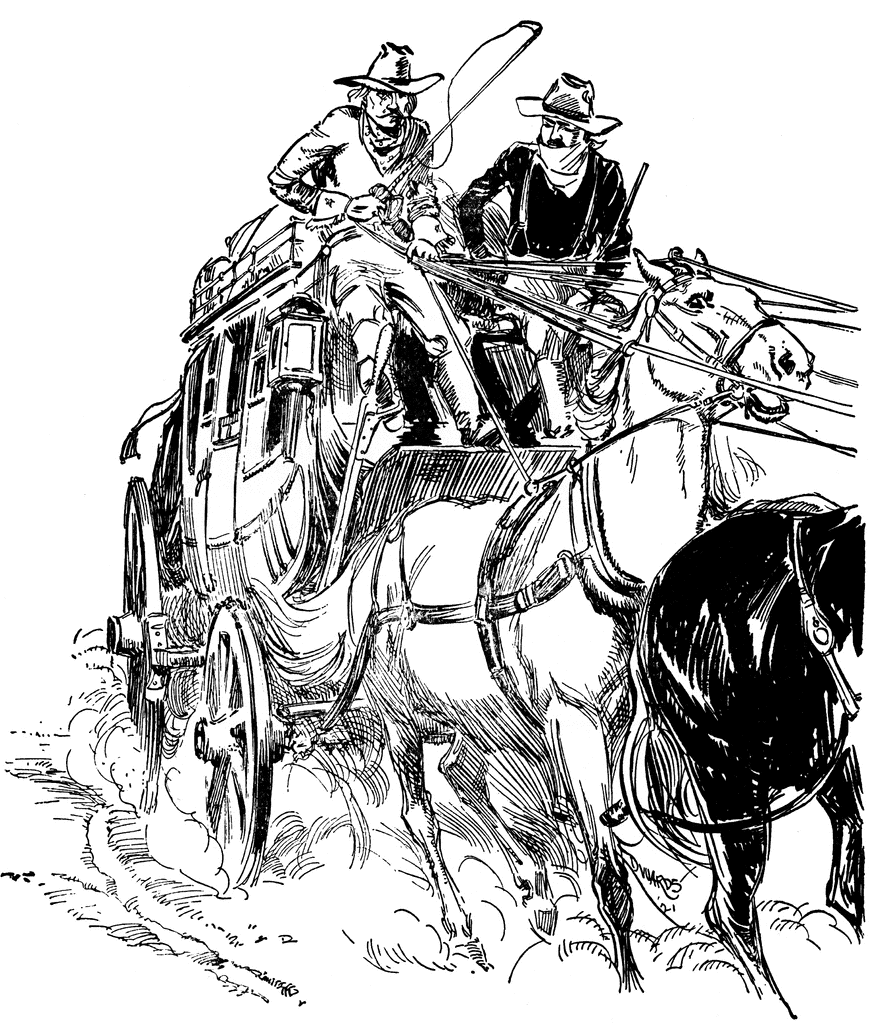
In the Dominion of Southern America, The Ballad of Bobby Pruitt was a very different story (in fact, it was both a story and a popular song). It actually starts during the Southern Civil War, when the the three Pruitt brothers served in the Confederationist army as raiders, fighting in Louisiana and Arkansas. Pruitt's Raiders, named after their leader, eldest brother George Pruitt, were one of the most successful raider units of the war. The tale tells that the troubles of the Pruitts began during one of their last raids of the war on a Loyalist plantation. During the fighting the elderly black nanny of the family was fatally shot, but didn't die before pronouncing a curse on the whole Pruitt family. While Pruitt's Raiders were one of the most successful raider units of the war, the war was lost already. During their last engagement of the war, George was killed, and the middle brother, Robert Pruitt, swore at his brother's hastily dug grave to never give up the fight and never give in to the British and their Loyalist toadies. Robert 'Bobby' Pruitt would lead his raiders and his younger brother Earl into outlawry in Texas and Arkansas. They were seen as romantic figures as often as outlaws by the people of the region. Eventually, Southern Royal Mounted Ranger Samuel Smith was charged with bringing in the Pruitts, an irony since he had married their sister Sarah. Ranger Smith saw it as his duty to bring the Brothers to justice. While hunting the Pruitts, who had no idea who was leading the Rangers, the Pruitt Gang staged an ambush in which Sam Smith was wounded before both sides realized the reality. When the Pruitts saw that they were gunning down their own brother-in-law, they broke off the engagement and ran. Even wounded, Ranger Smith pursued them, nearly cutting off their escape across the border into the USA. Smith held his men at the border, and the Pruitts met him there, swearing they'd not return to their home if it meant they'd draw the blood of kin again.
The Pruitt Gang survived as outlaws in the USA for a time before being ambushed during a stagecoach robbery by US Marshals, and in the fight Earl Pruitt was wounded and captured. Compelled by family honor, Bobby Pruitt told his remaining men that he would only take volunteers on a forelorn mission to rescue his brother, for which all volunteered. The Pruitts almost succeeded, but in the end both Bobby and Earl were killed in the fight for freedom, supposedly bringing to a conclusion the curse, though some variants of the story swear that their ghosts still ride the praire.

The first documented use of exploding shells against naval vessels was during the Siege of New Orleans in the Slaver Uprising, when General Jackson introduced their use against the Royal Navy. While they did not change the outcome of that war, they did given naval planners much to think about with regard to how to counteract such attacks.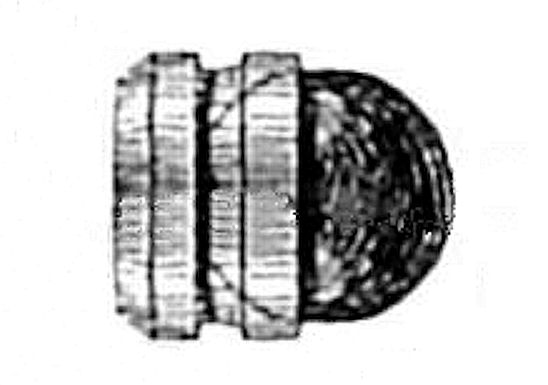
The United States of America were one of the first nations to start adopting iron armor on ships of the line. This was in part due to their close proximity and thus keen interest in the Slaver Uprising, and in part due to their limited access to Southern Live Oak which made for such excellent wooden ships due to its hardness. The USS Enterprise was the first American ship of the line to have a fully ironclad hull. This started the British Admiralty seriously thinking about iron armored ships, and they countered with the HMS Agamemnon. Ships without iron armor and up-gunned to take on armored opponents would prove obsolete in the few naval skirmishes of the Liberal War (indeed, the obvious superiority of the British and French ships, who were ahead of all but the Russians on these innovations, may have been a major factor for limiting the Eastern Powers' use of naval forces in the war).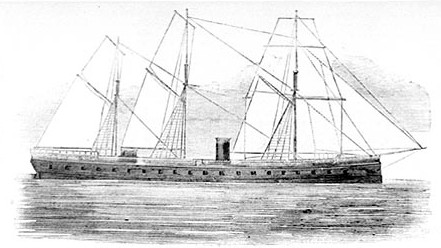
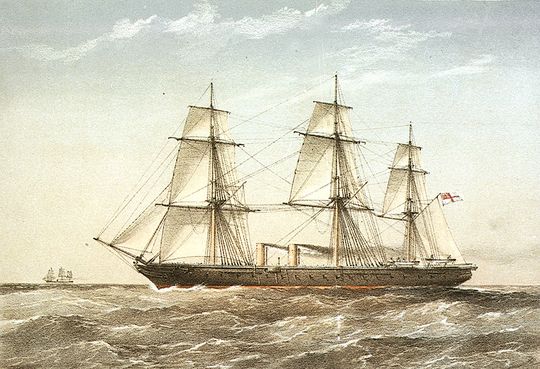
One of the great problems with the various theories of Diversification being promulgated in the middle of the 19th century was the lack of a mechanism for inheritance of features. However, this was quickly rectified through the work of famed flower horticulturalist Thomas Owsley of the Virginia Owsleys. Owsley published his observations on the statistics of blending inheritance in a series of papers throughout the 1850s. Crossing flowers such as roses or snapdragons could develop true breeding strains of red or white, for example, but not pink. Owsely discovered, however, that if he bred truebreeding red and white strains together, all the offspring would be pink. However, the more important observation was that when those pink hybrids of red and white were cross-bred, they would produce all three colors in a ration of 1 Red: 2 Pink: 1 White, thus suggesting that inherited genes for red and white existed and their pairing with like traits or unlike traits would determine the color of the bloom.




President Kays was a stern but caring president, sometimes referred to a a second father of the nation. His two terms, from 1849 to 1857, were ones of peace, prosperity, and stable growth for the nation, marred only by continued strife with Plains Indians in the territories. Many attributed his successes as paving the way for the continuation of Federalist occupancy of the presidency, when Nicholas Samuel Roosevelt, son of steamboat inventor and magnate, Nicholas Roosevelt, won the presidency in the election of 1856.
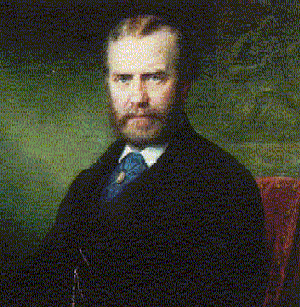
The nationalism of the 19th century took many different forms on many different scales. Some of the more eccentric movements focused on race or language or some other shared cultural feature as the base for their movement. One of these movements was founded by the charismatic Welsh language nationalist, Gwion Jones, in the mid 19th century. Dr. Jones was a widely travelled man, who had become convinced that the Welsh language was destined for extinction in Wales, and all his travels to the parts of the Empire showed him more spectres of assimilation. Gwion Jones became convinced that a new land for the Cymry was needed, one that would not be filled with Anglophones. He consided sites in Australia, New Zealand, even South Africa, but decided upon isolated British Patagonia as the most promising site. The first substantial wave of Welsh settlers arrived in the 1850s.
The Old Tudor Flag, often adopted by Welsh Nationalists
By 1858, the Chinese Revolution, in southern China at least, had become secure enough to make real changes to the governance and culture of the Chinese. Hakka, Hui, Han, and others in the south had abandoned the subservient practice of shaving their foreheads and keeping a queue, as had been demanded by the Manchu. The republicans of the south also banned the practice of binding the feet of girls. In fact, when the Chinese Constitution was adopted (based heavily on that of the USA), it was the most liberal of the time, with equality for women highlighted as much as freedoms of speech, language, and religion. As an aside, the name for the law enforcing freedom for missionaries of all stripes to prosetylize in China finally gave credit to Reverend Murphy - Murphy's Law.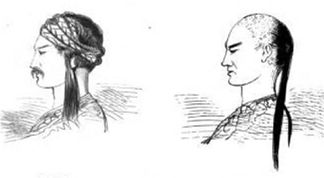
The Queen of England, Empress Elizabeth (formally named Empress by Parliament after India became officially part of the British Empire after the Sepoy Uprising), was quite taken with the Chinese Revolutionaries when she learned of their efforts to liberalize the role of the women, and began to apply pressure to Parliament to recognize them as a legitimate government and provide support. As history would record, Empress Elizabeth was a difficult woman to say no to.
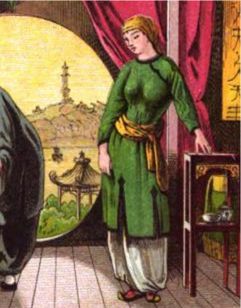
In 1859, the Washington Territory made a successful bid for statehood. While the main US transcontinental railway had passed to the north of the fledgling state, it had not done so by all that much, plus the lands of the Washington Territory had benefited from being along the southern spur of the wagon trail to Oregon for decades beforehand, with settlers not always wishing to go all the way to the Pacific. Lastly, expatriot Southerners of various stripes had also come across the border to settle. Washington was also along the main routes for driving Southern Cattle across the border into the USA.
In the process of transforming from territory to state, however, some adjustments were made to the borders. The unweildy jughandle of land in the northwest of the territory was lopped off and ceded to the Colorado Territory west of the 102nd meridian (with the 102nd meridian up to the Southern Fork of the Republican River forming the western border of the state). Washington's northern border was modified slightly by starting with and following the Republican River, which runs very close to the 40th parallel, until it crosses south of said 40th parallel for the last time, then follows to 40th parallel to the border of Missouri, with Missouri's western border forming its eastern border. The southern border of the state of course was at 36-30, the international border with the Dominion of Southern America.
The new State of Washington and surrounding nations, states, and territories.
The Flag of the State of Washington adopted the Coat of Arms of the Washington family for its flag, placed on a blue field so as to incorporate all the colors of the national flag.
In 1859, the Siege of Peking brought the Qing to their nadir. The south was under defacto control by the republicans, and the anti-Qing traditionalist rebels were at the gates of the Forbidden City. It is not known how exactly how the Emperor died, though he had been sickly for years, but the death of the Qing Emperor was the final straw that broke the Qing back. The traditionalists took command of Peking and proclaimed an end to the Qing dynasty and to Manchu domination, with plans to raise a new Han dynasty to the throne.
One of the first actions of the new regime was to expel the Manchu from their positions of power. This began an exodus of the Manchu back across the Willow Pallisade into Manchuria, though some Han who had become too close to the Manchu over the decades would accompany them. A scion of the Qing Emperor would be proclaimed in Manchuria as the legitimate emperor, but essentially his authority would extend no further than Manchuria proper.
The first Prime Minister of the Dominion of Southern America was Southern Civil War General and Founding Father of the Dominion, James Randolph. Prime Minister Randolph was a noted leader of the Loyalists in the conflict, and it was the Loyalists, particularly those from Carleton and North Carolina, who dominated the Dominion level politics of British Southern America. Randolph led the Dominion through those first vital years of rebuilding and federation, and thus can rightly be said to be a father of the nation. He held the post of Prime Minister from 1845 to 1852, after which he resigned from the post, citing health reasons.
The post of Prime Minister was next assumed by North Carolinian John Howe Jr., famed publicist of the Loyalist cause. His tenure as Prime Minister coincided roughly with the occupancy of the American Presidency by federalist Benjamin Hull Kays. The Federalists of America were traditionally pro-British, and indeed the Kays administration had amiable relations with the Dominion, even while competing to complete a transcontinental railway. Prime Minister Howe retained office for another 7 years, until his retirement from politics in 1859.
The third Prime Minister of the Dominion was once more a Loyalist stalwart, founding father of the Dominion, and a prominant Loyalist General in the Southern Civil War, Carletonian Horatio Grymes. Grymes continued the legacy of rebuilding and stability set by his predecessors, but was an old man even at the time of his assumption of the office. Prime Minister Grimes became the first Prime Minister of the DSA to die in office in 1862.
Residence of the Prime Minister
of the Dominion of Southern America
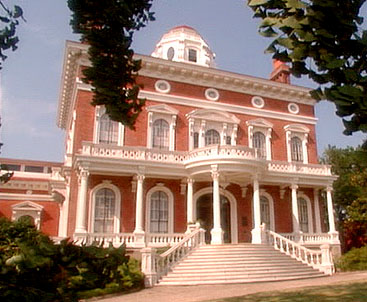
While immigrants had been coming to North America from Ireland since before the American Revolutionary War, most of that immigration was from protestant Ireland, particularly Ulster. After the USA won independence, there was a clear change in that pattern, with most protestant Irish immigration then focusing on British Southern America, through ports such as Charleston and Savannah, and later New Orleans. By the 1820s, there was a substantial increase in Catholic Irish immigration to the United States. Irish Catholics often joined Scots Catholics to form Celtic Catholic enclaves in the main ports of entry such as Halifax, Quebec City, Boston, New York, Philadelphia, Baltimore, and Richmond. Irish immigrants also moved to the interior with the great infrastructure projects of the 19th century, first the building of canals, and later, railroads. This brought more Irish to such interior cities as Buffalo and Chicago.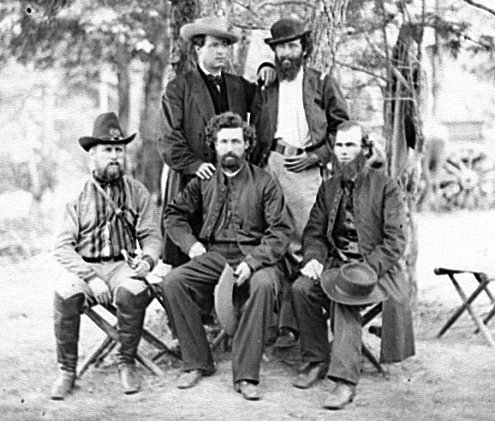
Most of the Protestant Irish in the USA eventually blended with other Protestant Americans, in British Southern America (and subsequently the Dominion of Southern America) the Protestant Irish were proud of their heritage and tended to remain apart in some ways from the rest of the populace (though oddly, had a high rate of intermarriage with the Civilized Tribes). Orange Marches and Societies became rather popular in the post-war Dominion of Southern America as a way for this population to show their distinctness but also loyalty to the Crown.
On the other hand, many Irish Nationalist expatriots found their way to the USA, and a series of hit and run raids across the border into the Dominion threatened relations between the two nations in the 1850s. However, join efforts between the Rangers of the Dominion and the Legion of the US were able to put a halt to these actions.

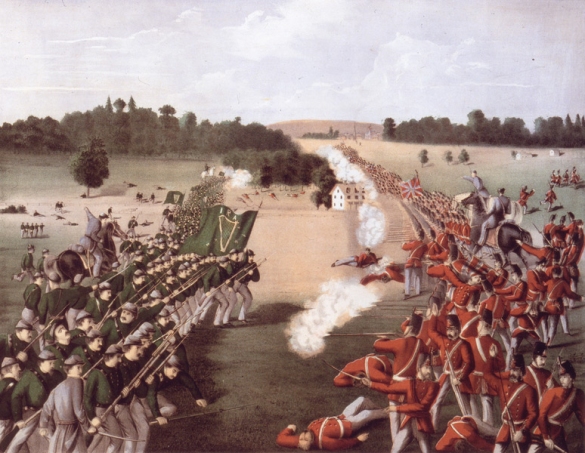
The Imperial faction was able to prevent the fall of Kyoto with Dutch arms and munitions, but barely. The Dutch navy had little ability or interest in taking on the Russians, however. However, the British were willing to back the Imperial faction in return of trade concessions. In 1859, the Russians were thwarted again and again by Royal Navy ships. While the Russians had looked to the Far East as a way to some speedy victories after the relative failure of the Liberal War, they were not looking to come into direct conflict with the British Empire again. Therefore, the British and Russians essentially played a game of nerve along the coasts of Japan, seeing who would flinch first. This allowed the Imperial and Shogunate factions on land to fight it out with less foreign interference. In the end, a sort of stalemate developed, with the Tokugawa Shogun in control of Northern Japan (including the 'new' capital city of Edo and the Russian occupied island of Ezochi) and the Emperor in control of the South (including the 'old' imperial capital of Kyoto). Between the two lay the much disputed Chūbu region, especially the mountainous eastern part of the region. Eventually, the British and Russians tired of this game, and came to an agreement to split the Japanese islands between them in terms of access, with the 138th meridian as the dividing line. While neither faction fighting in Japan were pleased with this action, neither could afford to lose patronage from their erstwhile foreign allies, as this might cause the other to pull forward.
The Flag of the Imperial Faction in control of Southern Japan was a white field with a golden chrysanthenum, the Mon of the Emperor.
The Flag of the Shogunate Faction in control of Northern Japan was a black field with a golden circle filled with three hollyhock leaves, the Mon of the Tokugawa clan.
While the Americans had their gold rushes of the 1850s, in 1860 it would be the British Empire's turn when gold was discovered in New South Wales on the continent of Greater Australia. Prior to the Australian Gold Rush, New South Wales had been predominantly a dumping ground for convicts and British adventurers with more ambition than sense. British Southern America had seen the lion's share of respectable migration in the first half of the 19th century, leaving New South Wales somewhat underpopulated. However, the discovery of gold in 1860 sparked for the first time a real interest in the distant continent. Within a year or so, Port Jackson and other ports were overwhelmed with ships bringing prospectors from around the Empire and the World to New South Wales. This led to increased strain on the traditional populations of New South Wales - the military and their families, convicts, the descendants of convicts, and the native Australians. Mainly pastoral, some of the old-time residents of New South Wales joined the gold rush, whereas others held themselves aloof from the prospectors, while yet others preyed upon them. Rule of law was hard to enforce in the wilderness and in the tent cities that sprang up to house the new prospectors.
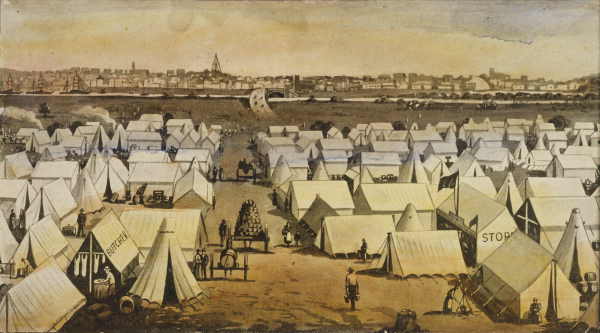
The first transatlantic cable was laid in 1855 between British County Kerry, in Ireland, and the US state of Newfoundland. This provided the shortest route across the Atlantic Ocean between Europe and America. The project in the United States was mostly supported by the Federalists who had traditionally been pro-British as opposed to the Democrats who had traditionally favored the French, though this point of division between the major American parties was fast vanishing in the wake of the Entente between the British and French Empires forged in the fires of the Liberal War. This first link between the US and the British Isles was nicknamed 'The Harp Line' after the traditional symbol of the Harp for both Ireland and Newfoundland which had a large Irish-American population. While a more formal message between the King of England George the Fifth and President Benjamin Hull Kays has been noted historically as the first message sent, local legend in both Ireland and Newfoundland claim that an earlier 'test' message was sent - Erin Go Bragh.
The transatlantic cable was a huge boon to the tiny and poor state of Newfoundland. As a terminus, its infrastructure, long neglected, was greatly expanded, bringing it truly in contact with the rest of the nation.
While not the first nor the last submarine cable laid, the first connection between the old and new world was perhaps the most important and symbolic. The British Empire would go on to be the greatest developer of submararine cable telegraphy in the 19th century. British telegraph interests developed their main station in the southwesternmost portion of Great Britain, at Land's End. At it's peak it would host 15 cable connections.
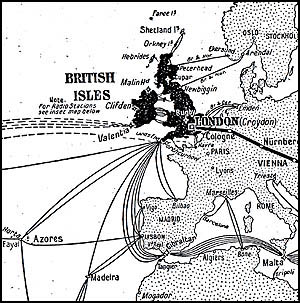
By 1860, the Manchu were in full flight to the Manchu homeland. Many of the Manchu and Qing officials were taken by surpise at the pent-up ferocity that was unleashed upon them in northern China, including Chinese Turkestan and Mongolia. At the root of it was the dual reasons of the humiliations that Manchus had placed over the centuries on non-Manchus, and the corruption that had become rampant in the Qing civil service. Some Western observers may have been tempted to believe that with so many of the career civil servants driven out of their posts, that the new regime would collapse into chaos - however, they would be forgetting the great number of talented Han, Hui, Mongolian, and others who had been candidates for civil service but denied due to being unable to find patronage or a big enough bribe. Therefore when the new dynasty (called Chuen, meaning Pure in Chinese) announced that the Middle Kingdom would return to a more fundamental Confucianism free from bribery and corruption (and with the number of executed or fled bureacrats, few disputed their ardor in reform), there were more than enough bright and well educationed non-Manchus free of the taint of the old regime to take their place.
Again, a naive observer from the West may have expected the northern rebellion and southern revolution to embrace and form a new China. However, the north was now dominated by fiercely traditional Confucians, whereas the south had already started a government which had more in common with the liberal nations of the Western World than their Confucian roots. The anti-Manchu reaction in the south had been milder, more gradual, but had been going on longer, and while there was no official discrimination against Manchus, the former administrators of China were by and large ignorant and disdainful of the new teachings of the West, and chose to return to the north, and thence Manchuria.
Both the north and the south claimed each others' territory initially, but the south was weary of war, and the north far from secure with Qing Manchuria at it's doorstep. The United States, France, and Britain were able to act as mediators to arrange an armistice between the two powers, with only a tepid agreement to begin talks in future on possible reunification of the two disparate parts of China.
Manchuria itself stayed loyal to the scions of the Qing dynasty, and refused to recognize the legitimacy of the Chuen dynasty. But essentially, Qing ruled over nothing more than Manchuria, and that at the sufferance of the Russians.
For the Qing Dynasty, the only bright spot of 1860s was that they managed to hold onto the loyalty of the Manchu people. The death of the previous Emperor and several of the more useless members of the Imperial Court in the Fall of Peking probably helped this process, allowing a more pragmatic and capable branch of the Qing to ascend to the throne. However, the Qing in Manchuria still had to deal with the Russians to the north, and they were in a very perilous position. Essentially, to retain their territorial integrity, the Qing had to become an economic and military satellite of the Russian Empire, agreeing to favorable trade agreements for the Russians and allowing them treaty ports on the Amur and the Pacific. The most important of these would be the southern port of Haishenwai, finally providing the Russians with a warm water (relatively speaking) port on the Pacific.
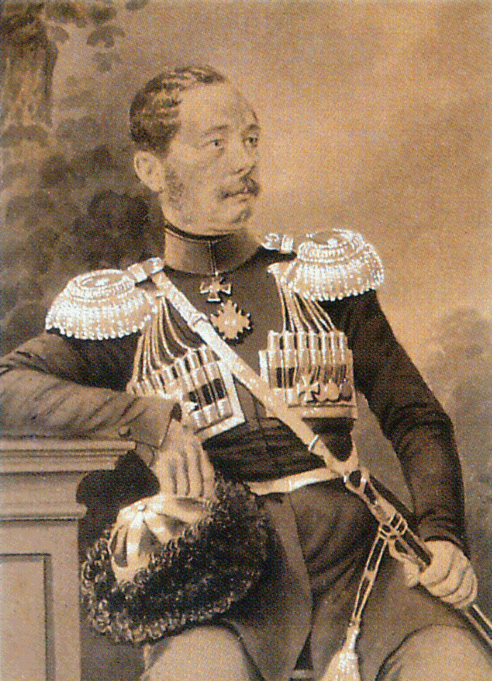

The flag of the United States of China was clearly inspired by that of the United States of America. It borrowed the idea of alternating stripes, but with thirteen, to represent the thirteen provinces of the revolution, rather than the USA's twelve representing the twelve colonies of the American Revolution. It was felt by the flag's designers that the prime number of stripes would better work with a simple alternating pattern of two colors, and they chose the red and white, according to some as representing the Han and related peoples (red) and Hui (white), omitting blue. Vexollogists will note the strong similarity to the flag of the British East India Company. However, the blue canton was retained as in the American flag, but instead of individual stars, the Chinese opted for one thirteen pointed star or sun, depending on which source is referenced.
A variant flag, somewhat tongue in cheek, flown by some Chinese units late in the war after being shown old flags from the American Revolution. However, it proved surprisingly popular for years and at one point had a vocal minority calling for its adoption as the national flag of the United States of China.
While President Nicholas Roosevelt was able to hold onto the presidency for the Federalists in the 1860 election, by the open election of 1864, the nation was experiencing Federalist fatigue, and a Democrat again ascended to the presidency. Anthony Wayne Tullis (named after General 'Mad' Anthony Wayne, one of the founders of the Legion of the United States) was a gentleman farmer and dark horse candidate from Ohio, but whose family had roots going back to colonial Virginia.
President Anthony Wayne Tullis
First 10 Presidents of the United States of America* The Democratic-Republican Party's name was shortened to the Democratic Party in the 1840s.
- George Washington - No Party Affiliation - 1789-1797
- John Adams - Federalist - 1797-1805
- Thomas Jefferson - Democratic-Republican - 1805-1813
- James Madison - Federalist - 1813-1821
- John Quincey Adams - Federalist - 1821-1829
- John Andrew Shulze - Democratic-Republican - 1829-1837
- Peter Buell Porter - Federalist - 1837-1841
- Pierre Nicolas de Condorcet - Democrat* - 1841-1849
- Benjamin Hull Kays - Federalist - 1849-1857
- Nicholas Samuel Roosevelt - Federalist - 1857-1865
The style revolution was inspired by the synthesis of rationalism and romanticism, leading to a move in the arts and fashion towards more functiona garments, drawing inspiration from the past but rejecting its more extreme indulgences. The real key to the fashion revolution, however, was the patronage of Empress Elizabeth II. The Young Empress of the British Empire rejected corseting and other restrictive and heavy fashion conventions in favor of clean lines, functionality, and a celebration of the natural body. Soon, salons across Europe and the Americas were filled with women embracing the loose and practical new fashion.

A mid-19th century lady's touring garment, in part inspired by Asian styles of dress.

Another style of the mid-19th dress of the time, note the simplicity of style and lack of corseting.
The name of the union of Denmark, Norway, Sweden, and Finland was an open question in the first years of the union. Various versions of Sweden-Denmark and Denmark-Sweden were the most common, though Denmark-Sweden-Norway and other lengthy names were also seen in the first years. By 1864, however, the Act of Union was passed, doing for these nations much what similar legislation did for the United Kingdom of Great Britain and Ireland, albeit with much more local autonomy and the retention of local state legislatures for the four constituent sections. In the end, the poetically inspired United Kingdoms of Scandinavia was chosen as the official post-Act of Union name. Scandinavia was a somewhat obscure reference to the region until the popular poem and later song, Jeg er en Skandinav (I am a Scandinavian), by Hans Christian Andersen. Mr. Andersen had close ties to the Danish royal family since childhood, and was an ardent unionist. Jeg er en Skandinav went on to become the national anthem of the Union.
Andersen, ardent Scandinavian

Empress Elizabeth II of the British Empire, Queen of the United Kingdom of Great Britain and Ireland, it was initially feared, might follow in the footsteps of her illustrious namesake, Elizabeth I, as an unmarried monarch. The names of suitors from the Empires of Scandinavia and Germany were the lead contenders as having appropriate ranking scions of the Protestant faith. A dark horse candidate was a younger member of the French Royal Family (presumably if willing to convert). However, in quick succession the Queen-Empress refused all matches. She was a strong willed, vivacious woman, perhaps best loved from afar, some said. Her advocacy for increasing women's rights in the British Empire and rather liberal views on arts, dress, and religion, was seen as detriments to potential matches.
However, the Empress had other plans for her future. She met and fell in love with the handsome young Scottish 13th Earl of Strathmore and Kinghome, Thomas Lyon-Bowes. Initially, her wish to marry was opposed by Parliament and the Archbishop of Canterbury. However, with the election of a new majority Liberal government in 1864 coupled with the death of the previous Archbishop and the Elizabeth's appointment of a more sympathetic occupant to the post, Elizabeth and her allies pushed through both temporal and secular approval of her love match, and for the first time since 1515, a British Subject married into the the direct line of the Sovereign. While Thomas was only recognized as Consort to the Empress, their children would have full rights of inheritance to the British throne.
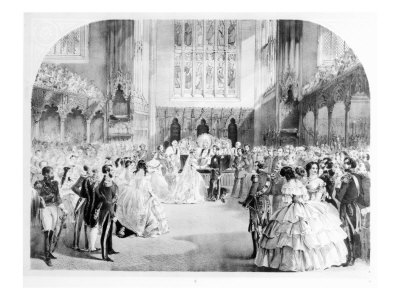
The wedding of the British Empress Elizabeth II in 1865 was covered with fervor by all the Western press, and especially those reporting on style. Prior to that time most wedding dresses were simply well made stylish affairs. However, Elizabeth chose a loose fitting royal blue gown that combined the more practical trend of clothes started in the mid 19th century with a whimsical medieval sensibility, like some Faerie Queen in Cerulean. It set the standards for wedding dresses for at least the next 50 years, and made blue the standard color for the bride (though with a wide range from sky blue to midnight blue being embraced by women throughout the Western World). It is a popular myth that the Empress Elizabeth chose blue to stand for loyalty and purity; she chose the color because she liked the dress.
In the Eastern World (other than the parts in the British Empire such as India and Imperial Japan) in the 19th century, the color red remained the traditional bridal color with the one exception of the United States of China, where most women chose to follow the new Western style, inspired by the Empress who had shown such warmth and interest in their new nation.
Western and Eastern Wedding Dress Styles


The death of Tsar Constantine shortly after the Liberal Wars brought his only child to the Russian throne as Tsar Alexander II. Alexander's reign was a relatively short one, unlike his father's. He too had had only one son, though he had had daughters who were married into the allied eastern powers of Prussia and Austria. His son, Nicholas, was even at a young age an explorer and adventurer, and was in fact on an extended expedition in Siberia when his father died in 1864. Months passed and Nicholas' party did not make contact with St. Petersberg, prompting rumors that the Tsarevich had died as well. A brief civil war flared, with the main factions rallying around the families of the aunts and sisters of Nicholas (despite the Paulinian ordinance establishing essentially semi-Salic inheritance). One of the strongest bids, ironically, came from Prussia, where William, the heir to the Prussian crown, was a nephew of the Tsarevich on his mother's side. The Poles took the chaos surrounding the clash of rival factions to reassert their separate identity from Russia, but this time declared the Prussian heir as the King of Poland. Things took a dramatic turn in the succession clashes when Nicholas' party, many months overdue, arrived with Nicholas alive and well. By this time, however, Nicholas had to fight to assert his rights. Seeking allies, Nicholas made the controversial overture to his nephew William, offering to recognize the Prussian Prince as the King of the troublesome Poles, in return for his support of Nicholas as rightful Tsar. While William's army was smaller than most of the Russian forces, the Prussians were highly disciplined and well armed, and their support proved decisive, crushing those who refused to relent between the anvil of Prussian held Poland and the hammer of the predominantly Cossack forces of the east rallied by Nicholas. By 1865, Nicholas was unchallenged Tsar of Russia, and with the death of his own father that year, William became dual monarch of Prussia and Poland.
The 29th state to enter the Union was carved out of the Adams Territory in 1866. Named after the river that comprised its northern border, Niobrara, it's growth into statehood was fueled by the transcontinental railroad that ran through its center. The state's eastern border was the Missouri River, to the south the 40th parallel to the Republican River, and the 103rd meridian comprised the state's western border.
The Nguyen Dynasty was the first to unite the east coast of Southeast Asia under Annam. While the founder of the dynasty had started out relatively open to trade with France and other nations of the West, over the decades of the 19th century, the Nguyen Dynasty became more and more conservative and isolationist, and French ties were eventually severed. The democratic revolution touched off in neighboring Southern China by the agitation of a missionary, however, threw the Nguyens into a paranoid spiral. All missionaries had already been ordered out of the country, but now any caught were executed immediately. Christian converts were persecuted and martyred, many of whom were Catholic. The Spanish government was incensed over such actions, and launched a punitive action from her colony in the Phillipines. The Spanish navy and army, bolstered by Filipino troops, met with more success than they had imaged, as the Nguyen had made several enemies in the expanded Annam who say the Spanish invasion as their chance to repay past debts. The Emperor and his family were killed in rioting in the capital before the arrival of Spanish troops. By 1867, the Spanish found themselves in possession of greater Annam.

Tomb of the last independent Emperor of Annam.
The allure of a canal at the Suez Peninsula had existed since Napoleon. However, it took the combination of the Entente Cordiale, Liberal War, and the Sepoy Uprising to spur the British Empire to negotiate with the Ottoman Empire for the construction of a canal between the Mediterranean and the Red Sea. While relations between the Ottomans and the British had been stained over the Hellene War of Liberation, the British and the Ottomans now had common cause in the containment of Russia and Austria. Therefore, in 1859 the Anglo-Ottoman Canal Company was formed. The canal was thought to be a multi decade project initially, but when surveying showed that no locks would be needed for the canal, and construction was completed in less than ten years. In 1868, the Suez Canal began operations.
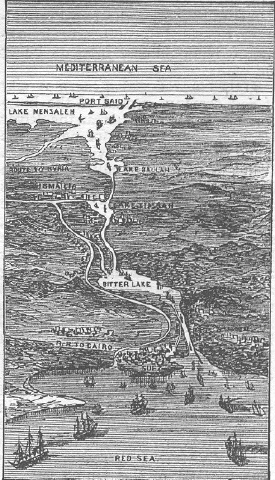
The 1860s were dangerous times in Asia for indigenous dynasties. Some feared revolutions and revolts like those that had torn China assunder. Others feared economic and political dominance by Western powers such as what had befallen Japan and Manchurian China. Yet others feared outright invasion and foreign rule, as had happened to India and Greater Annam.
Siam was one such nation. The Siamese had had relatively close and cordial relations with the British for most of the 19th century, but Britain continued to press for freer trade with Siam. The Sepoy Uprising and the subsequent take-over of the Subcontinent by the British Government had given Siam concern about British intentions, concerns that were heightened by Britain's dealings with Imperial Japan. These fears were magnified by the Spanish invasion of neighboring Greater Annam. On the other hand, Britain had slowly warmed to the new democratic government in Southern China, and seemed to be on reasonable relations with them, with the exception of trade dealings and extraterritoriality. In the end, the traditional relation with Britain won the day.
Siam's king, scion of the Chakri Dynasty, was an avid intellectual, yet a devote Buddhist. He saw the new knowledge from the West as essential to his nation's survival. He instituted a number of educational reforms and acquiesced to Western demands for lowering barriers to free trade. Ironically, this long resisted move would lead to an economic boom in Siam. Chakri-ruled Siam would also reach out to the United States of China, entering a number of trade and cultural agreements. The King of Siam also became intrigued by the new Deist Buddhism developing in the USC, and saw much to be admired in its rejection of superstition. While Siamese Buddhists would remain more traditional than the Chinese Deist Buddhism, it adopted many of their reforms which were seen as compatible with traditional Buddhism. Another reform measure inspired by both the Chinese and the British was the liberalization of the role of women in Siamese society. While not as agressively egalitarian as the new USC, the reforms were substantial, and caught the notice and approval of Empress Elizabeth of the British Empire.
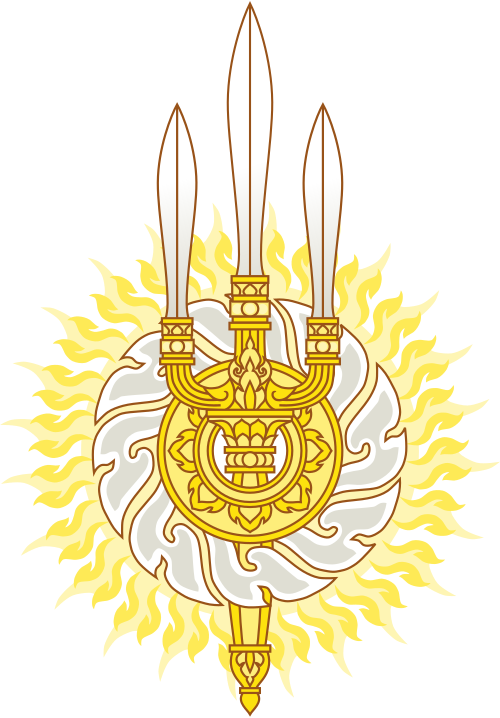
Folk Music in the early Dominion is poorly documented and had many regional variations, but all of them were influenced by the music traditions brought from Africa with slavery to old British Southern America. The ones that are most recognized are the Folk reels of the rural white population, mostly English and Scottish in derivation, but heavily influenced by African music, especially the adoption of the bandjar which is descended from stringed instruments made of gourds. Negro (a term that became popular for African descended Southerners around the time of the formation of the Dominion, perhaps due to Spanish Caribbean influences as the word means 'black' in Spanish) Music of the time combined traditions of the fields such as "hollerin'" which had deep African roots with the hymns being learned in Baptist and Methodist churches (which were seen as predominantly 'negro' or 'poor' churches in the Dominion). Negro music spread in popularity due to Balladeer Shows, some performed by whites in blackface, and others by negros themselves, that spread throughout the South even before the end of slavery and found popularity in the United States of America and the United Kingdom. In the Province of Louisiana, Cajun Music predominated, combining French Folk musical traditions with African and other influences. In the island provinces of the Dominion, the primary music blended Spanish (including Moorish!) and African influences. As the Dominion fostered more contact between the far-flung Provinces of the British South, the various folk music of the regions would have a strong influence on one another.

Blacks in the United States of America had been free since before the beginning of the 19th century. The heaviest concentration of blacks in the USA remained in the State of Virginia, though not as much as during the colonial era. In Virginia, a fairly strict division remained between black and white, with most blacks staying tied to the soil, though there was a modestly sized but prosperous black middle class, those engaged in a number of trades, and many of whom served their black brethren in this capacity. More ambitious members of the USA's black populace often filtered out of Virginia, either to US cities along the great transport routes, or out west to establish homesteads of their own. Most of these adventurous blacks (including many famed Westerners), far from the older ways of Virginia, were seen more as exotic than a threat to the white establishment of the USA in the various states and territories.
Viriginia during the first third of the 19th century remained stable in her black population in part due to the infusion of runaway slaves from British Southern America prior to the Slaver Uprising. Southerner blacks (often referred to as Negros, in part due to the Spanish influences in the South) were often drawn to Virginia with its relatively large black population and at least superficial cultural similarities to British Southern America. While blacks in Viriginia were often helpful initially to these escapees from servitude, they also often held a superior attitude towards Southerner blacks, which led many former slaves to leave Virginia for other regions of the USA. In the years after the Slaver Uprising and the British Empire's abolition of slavery, a significant proportion of runaway slaves returned to the South, to reunite with families and friends, as well as to return to more familiar surroundings.
A minor but secondary influx of Southern blacks (Negros) into the USA would occur with the rise in popularity of Southerner music, much of it pioneered by the black and mulatto population of the DSA. Black and mulatto entertainers would come north for the money to be had for their performances.
It should also be noted that black enclaves indigenous to the original colonies also existed, though the Southern drawl was often associated with blacks.
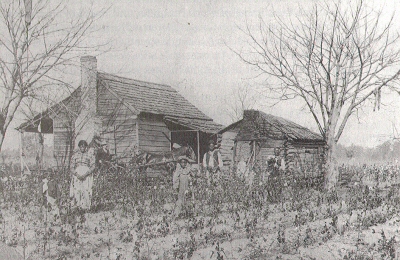

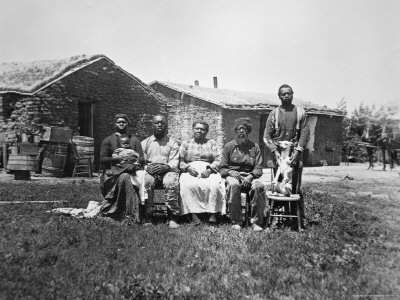
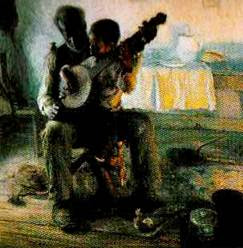
In the 1850s the discovery of a process to distill kerosene from petroleum oil sparked interest in what were previously considered a nuisance when digging or drilling for water. Kerosene prior to this period had been provided by whale oil, a more costly alternative and more dangerous to harvest. While some hand dug wells were started in the late 1850s, the 1860 well drilled by Raymond Dell near Titusville, Pennsylvania kicked off the first major oil boom. Dell prior to this point had been disparaged even by his own family as a 'tinker and drunkard', but the hard drinking Pennsylvania Dutch Dell (an anglicization of Doell) was a visionary, and would also direct the creation of the first refinery in America for his well and others that opened up in the area. The 1860s saw oil wells drilled in the neighboring states of Ontario, Ohio, and even in the mountains of Virginia. Hugh Peters in Ontario and John Finney in Ohio were the drivers of the oil rushes there. Together, Dell, Finney, and Peters would merge into DFP Oil, the largest oil company in the United States.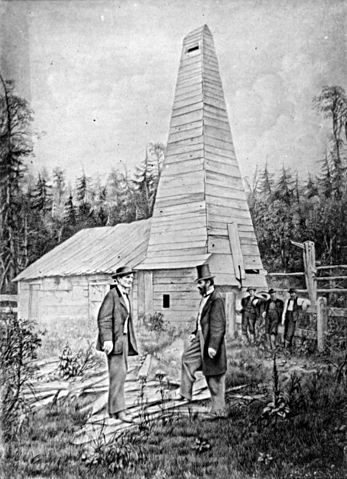

John William Beck, the grandson of German immigrants, was notable for his work in the 1860s with hybridization of corn breeds in Pennsylvania. He published his work citing improved features from hybridized cross-breeds of pure strains. While it would take decades commercialize Beck's findings, the principle would be expanded to other areas of natural science and popular philosophy - including those dealing with race.
The Merina Kingdom had ruled over most of Madagascar for centuries. It was only in the 19th century, however, that European powers began to recognize the Merina king, Radama I, as overall lord of Madagascar. His widow, Ranavalona I, ruled as queen over all of Madagascar, but much to the chagrin of the Europeans, she held foreigners and foreign powers at arms length until her death in 1862. Radama II inherited the throne and was very different from his predecessors. Even before the death of his mother the queen, he had secretly taken instruction in Deism from American missionaries. Upon his ascension to the throne, he openly proclaimed his own religious beliefs, but rather than impose them upon his people, he proclaimed the principle of freedom of conscience to be the law of the land on the island. As part of this new freedom, he allowed missionaries from other nations such as Britain, France, Portugal, and America to prosetylize in Madagascar. He also allowed for foreigners to rent and purchase land on the island (though with heavy taxation). Eventually, some of the old guard felt endangered by Radama's reforms, and tried to stage a coup against him. However, Radama II had become popular among the people and was able to seek protection amongst them until the capital could be retaken by a joint Anglo-French mission. From that time forward Madagascar became a joint protectorate of France and Britain, but with Radama II ruling (granted, taxes on European land ownership were significantly reduced after the intervention).
King Radama II
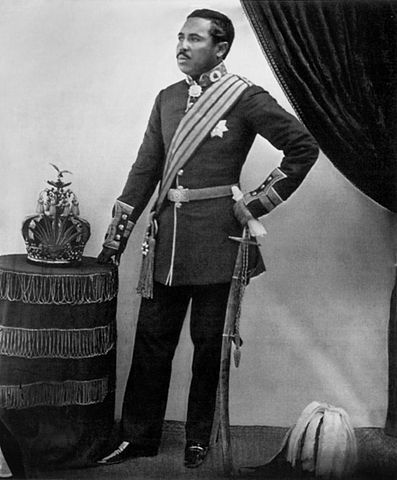
With the influx of immigrants to the southeast of British Greater Australia due to the Gold Rush, there was a concommitant push for a new province there separate from the old government in New South Wales. Much the same had happened in the 1850s on Van Diemen Island, though not driven by gold. Thus in 1868, on the tenth anniversary of the Empress Elizabeth's coronation, the new colonial province of Elizabeth was formed on British Greater Australia.
The story of longitude is a long and convoluted one. While latitutde has a natural prime parallel at the equator, longitude has no natural prime meridian. For the first half of the 19th century, many nations used a line running though their own capitals as their nation's 'prime' meridian.
By 1869, scientists and navigators insisted on a convention to create an international prime meridian. Three camps emerged early on in the debate, those who favored Paris, those who favored Greenwich Observatory in London, and those who favored a neutral line out in the mid-Atlantic.
Eventually, the Greenwich advocates won out, due to two factors. The first and most compelling was the consideration that the majority of the naval vessels in the world already were using Greenwich as their prime meridian, due to the naval dominance of Great Britain. The second was the support the Americans threw to the Greenwich option as soon as it became clear that a US Prime Meridian would not be viable - but that the American Federal District's (and New York City's) meridian was essentially 74 degrees from that of Greenwich. While the numbering of the meridians used in many cases as state borders in the USA would change with the adoption of the Greenwich Prime Meridian, they would still remain as major meridians in the Greenwich system.

By 1870, the experiment with responsible government in the Dominion of Hispaniola was over. Years of mismanagement and malfeasance by squabbling factions in and out of power had left the government of one of the richest provinces in the British Western Hemisphere on the verge of bankruptcy. While the island's infrastructure itself had benefited from some of the spending binges of the Dominion's government, such as the Grand Opera House in Port Prince, the roads and irrigation projects, and the education initiatives of the 1860s, other wasteful spending such as the several Governor's mansions, had finally become enough for the populace of Hispaniola. Rather than support a major tax increase and yet another round of political chicanery, the people of Hispaniola petitioned London to return Hispaniola to the status of a British colony.
The State of Winnipeg was admitted in 1870, named after the lake that formed its northeastern border (the rest of the eastern border followed the Winnipeg River to the Lake of the Woods and then along the northwestern border of Minnesota). The northern border was set somewhat arbitrarily at the 54th parallel north (which was close to the top of Lakes Winnipeg and Manitoba as well as the Saskatchewan River. Winnipeg's southern border was the watershed for rivers flowing into Lake Winnipeg, as far west as the the new state's western border at the 102nd meridian. Winnipeg was notable for being a state with a population predominantly made up of Metis whose primarly language was French. The region of the state had long been a bastion of the fur trade.
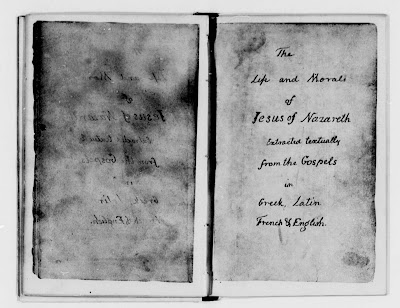
The Freedom Deist movement in the US, while not banning the standard bible entirely, chose to use the Jefferson & Priestly Bible, a collaboration by Thomas Jefferson and Josephy Priestly. The JPB was a chronologically organized, profoundly edited, version of the New Testament with all the 'supernatural accretions' removed from the text. The brainchild of Founding Father Jefferson, the book became a true collaboration between the two. Published in 1810, several years after the deaths of both men, it became an instant favorite of Freedom Deists.
Determinist Deists also were frequent users of the JPB, but more in conjuncture with the traditional Bible. The Determinist Deist denominations saw the work as a useful guide to the scriptures, and often used later editions that featured cross-referencing footnotes with the traditional bible.
While both branches of Deism flourished throughout the first half of the 19th century, they tended to grow apart over that time. The Great Deist Convocation of 1870 was the largest attempt to unify the Deist churches into a single denomination - it failed. The two main factions found themselves irreconcilable. The only lasting agreement to come out of the Convocation was the removal of Revelations from the biblical cannon of both factions, placing it with other apocryphal works (not that this mattered much for the Freedom Deists who relied much more heavily on the JPB than the actual traditional books of the Bible).
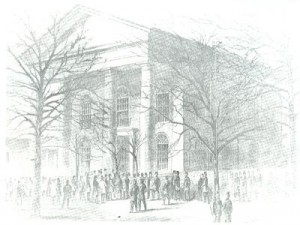
After the failure of the Great Deist Convocation, the Determinist Deists found themselves allying more with the liberal branches of mainstream Protestantism and Catholicism. The Freedom Deists began to look to other faith traditions for allies, such as Taoism and the newly formed Deist Buddhist Convention in the United States of China, which was starting to find adherents among the Chinese expatriot communities in California and Oregon.
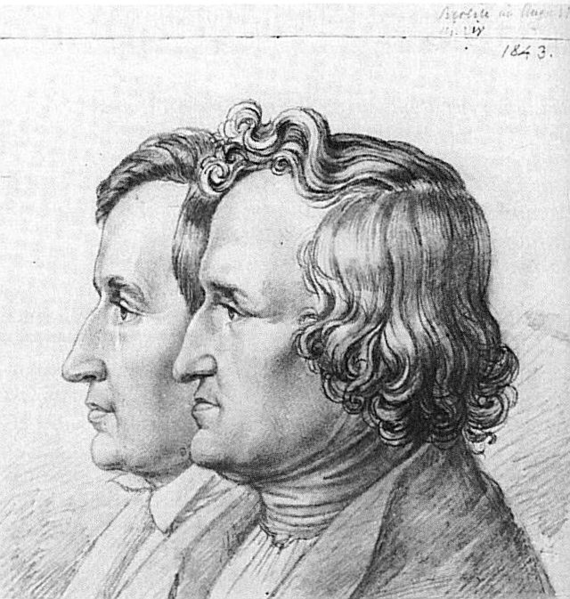
The Brothers Grimm during the early days of the forming Empire of Germany
Jacob and Wilhelm, the Brothers Grimm, were integral to establishing the new German identity in the first half of the 19th century. Having come from humble origins, the family struggled until Jacob and Wilhelm published their collections of German fairy tales. The work was a seminal one in starting to create a sense of shared identity among the disparate peoples of the fractured German states. It also brought the Grimms much needed recognition, including honarary doctorates. This work would eventually lead to their appointments as professors at the University of Göttingen, which would fall in the territory of the Kingdom of Hanover. As the Grimms moved on to further works in the German language including etymology, they also became active in liberalist and pan-German activities. They were particularly fortunate to be in the lands of Hanover, which were relatively friendly to such activities compared to the leadership in some of the other German principalities, especially after the Napoleonic Wars. Their outspoken views on these subjects led to their selection as representatives to the new German legislature that formed in Hanover once the Prussians cracked down on Westphalia. The Grimms were among those who had a hand in writing the new German constitution. The Brothers Grimm would continue to split their time between their professorial duties in Göttingen and the German legislature in the city of Hanover until old age claimed them in the early 1860s.
The Brothers Grimm as distinguished Parliamentarians near the end of their lives

International Cricket started with exhibition tours, first of English teams through the Dominion, and then of Dominion teams to the British Isles. By the 1860s, Cricket had become a national pastime for both the United Kingdom and the Dominioon. In 1868, in honor of Elizabeth's 10th year on the throne, an all-star team of Southerners met England's finest on the pitch in England. To the shock of all, the Gentlemen from the South took the series. The Queen's Cup was born that day, though an actual trophy was not created nor passed on until the next year when England was hosted in the Dominion, and still lost! It was only the third year that England broke the curse and took the Cup back to the acclaim of all of London and the United Kingdom. The hotly contested cup would continue to alternate hosts yearly between the two countries. While other British colonies and protectorates would develop cricket and their own national teams, and rivalries would wax and wane between nations, it was the match between Britain and the South that would remain the most avidly followed and prestigious of the matches.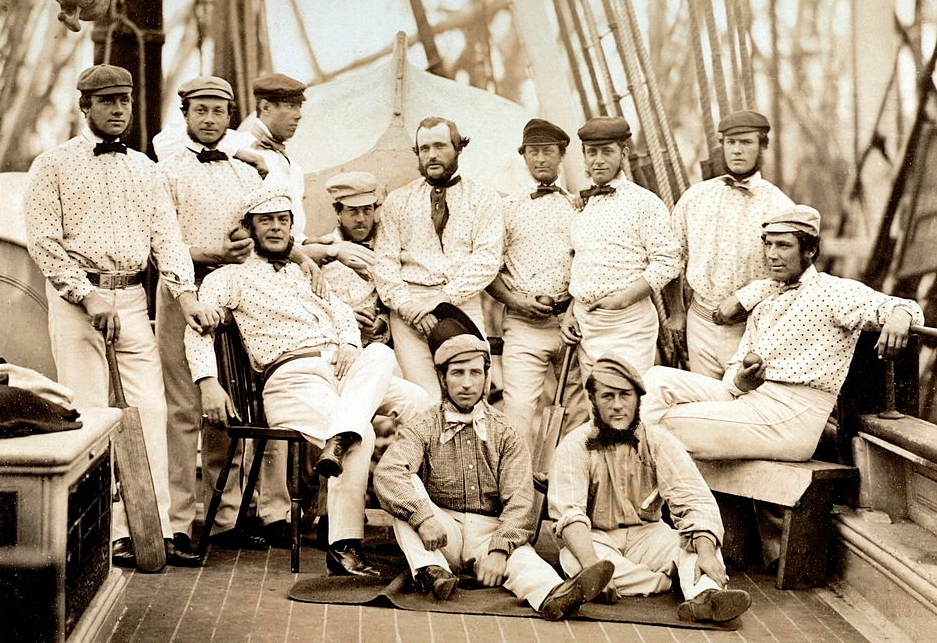
The next state to enter the union was the state of Colorado. Taking the name of its parent territory, Colorado was formed on a foundation of gold. The gold rush to Colorado in the 1860s built a new population in the eastern half of the old Colorado territory rapidly, enough to warrant entry as a new state in 1872. To the east the state shared its border with Washington. To the north it retained the old territorial border of the 40th parallel north. It's southern boundary was the international border at 36-30 with the Dominion of Southern America. It's western border started with the Green River where it crossed the 40th parallel, following it down to it's merger with the Colorado River, and briefly follows the Colorado until it crosses the 110th Meridian, which the border follows to it's terminus at the DSA border. The remaining lands of the old Colorado territory were named the Shulze Territory, after President John Andrew Shulze who had acquired the territory from Texas.
The State of Massachussetts for the first century after the American revolution adopted the naval "Pine Tree Flag" as it's state flag. By the approach of the nation's Centennial, however, there were some moves in the state to replace it with another design.

The Flag of Virginia was essentially the Great Seal of Virginia, established during the Revolution, placed on a blue field. However, there would be several variations on the way the seal was depicted until this version was finalized in time for the nation's centennial.
Chuen China found itself in a precarious position. Russians on their northern and eastern border were making greater and greater inroads into the far east, and one of the Chuen's Dynasty's greatest fears were a Russian backed Qing restoration. To their south, American, British, and French foreigners were welcomed to the radically westernizing United States of China, land Chuen China considered rightly part of the Middle Kingdom. The fear of missionaries bringing strange and radicalizing religions was counterbalanced with the fear of Western invasion should Chuen China take steps to stem such activities, with the greatest object lesson being the fall of greater Annam to the Spanish.
While Chuen China wished to restore tradition, they equally wanted to reform the bureacracy, and knew, whether desired or not, that they needed to modernize the military. But how to gain access to Western training and equipment without inviting their own downfall? The Chuen answer was to make alliance with a nation that had a modern army but no particular interests in the far east at the time, one that had not shown a strong support of missionaries in the past. And so began the influx of Prussian and Polish officers and the goods of Prussia-Poland into Chuen China.

The Joseon Dynasty had practiced a strict isolationist policy throughout most of it's rule, having contact almost exclusively through China. Despite this, after the Opium War, various missionaries had managed to sneak through to Korea. The troubles in China in the mid-19th century shook the Koreans to their core, as it had so many other nations in the Far East. Countries like Greater Annam, the Japanese Shogunate, Imperial Japan, and Qing Manchuria were coming under the direct or indirect rule of Western Powers. Those few who still remained independent of the Westerners had to choose which China to associate with, or to risk going into an unsteady future alone. While there was some feeling in the Korean Court for remaing aligned with the Qing Emperor, Russia's influence over Manchuria would in practice place Russia as their new 'protector'. The Siamese had already chosen alliance with the new and wildly radical United States of China, but the USC was farther from Korea, and the court found the USC adoption of Western ideas abhorent. On the other hand, the new Chuen Dynasty in Northern China was traditional Neo-Confucianist, and relatively free of overbearing foreign influence. Thus did Korea align with the Chuen Dynasty. But with the Russians on their borders, the question remained open whether this would be enough.
The first part of the 19th century had seen the rise of liberalism, and by the middle of the century it seemed as if it would be the dominant philosophy guiding the development of societies in the world.
However, a new social system was proposed in the mid 19th century as a reaction to liberalism. Zeus Korsgaard (Zeus was a nom de plume, though Korsgaard was his family name) was a young firebrand whose political leanings caused him to leave his home in the Jutland Peninsula to find a more receptive audience in Prussia-Poland. In 1865, at the tender age of 20, Korsgaard wrote his seminal work, "In Defense of the State," which essentially laid out his counter to the more established liberalism of the West. He rejected liberalism's emphasis on the individual, insisting that it was only service to the state that could provide a stable society and coordinate the various segments of society. Korsgaard insisted that the entirety of history and all levels of society must be woven together into a mutually supportive whole that would culminate in the stable and prosperous state. He stated that tradition and history should be venerated and used to provide the foundation for the state, noting that each state had a unique history and tradition that established its identity. This tendency towards nostalgia and commemoratinig the past was perhaps a lingering trace of romanticism from the earlier part of the century which had served as a sort of cultural counter to the enlightenment. Korsgaard further endorsed the essential role of the ruler as the centerpoint for the state, citing the Prusso-Polish Kaiser and Russian Tsar as two examples of this principle. Korsgaard believed that family, class, industry, all must be fostered but also subservient to the state.
Zeus Korsgaard Portrait

Anthony Wayne Tullis was the first President of the United States to die in office, a death that rocked the young republic. He was assassinated on March 15th, 1868, by a wild-eyed immigrant from the Kingdom of Sicily, Antonio Sciolaro. The man was a failed baker who was believed by the Bureau of Security to have become involved with Sicilian criminal elements in the aftermath of his business failure, though no political or financial motive could ever be ascertained. Indeed, reports were that the assailant had become fixated on the President, noting their shared 'first name' and having everyone call him Anthony. Sciolaro was gunned down almost immediately after shooting the president, his last dying word was reported as 'mangiare', which was probably rambling but some of the more imaginative investigators into presidential deaths have speculated on some other, more significant, meaning (though no two hold the same theory). Anthony Wayne Tullis did not die immediately of his wounds, but lingered for a week before succumbing to his deathblow. Upon his death, his Vice-President, Barabas Lynch, assumed the role until the new election. Lynch declined the invitation of his party to run in 1868, instead quietly and efficiently filling the role until the end of the Tullis term in 1869.
The Dual Monarchy of Prussia and Poland offered new opportunities to young, restless Poles. While the Prussians had most of the high offices in the dual monarchy (or later, Empire), there were places for Poles in the foreign services and adventurous Poles began to spread across the globe. Many in military service would end up in Chuen China or Korea as advisers to their modernizing armies. Others joined the merchant marine. Yet others would become explorers - Africa in particular seemed to hold a strange attraction for the Polish mind. The most famous early Polish African Adventurer was Konrad Januszewicz who in 1872 became the first European to map the entire course of the Congo River, and whose claims of the Congo Basin in the name of Prussia-Poland would set off a land rush in Africa by the European Powers.

The Gitchigumee Territory had been attempting to gain statehood since the 1850s, but had faced the twin barriers of the influence of the powerful Northwest Company who had no desire at that time to see statehood for one of its main fur trading centers, and poorly hidden prejudice of the natives who had settled there. However, by the 1870s the Northwest Company's attitude had changed, and the continuing success of the Province of Indiana in the Dominion of Southern America to the south had softened attitudes in Congress, Also, the new State of Manitoba, with a large Metis population, favored entry of the Gitchigumee as another predominantly Francophone state - the Lingua Franca of the native peoples who had decided to remain in the territory and settle rather than face the wilds of the Hudson Territory. So, in 1873, the State of Gitchigumee joined the Union. It's flag was based in part on the Hiawatha Belt of the Iroquois Confederacy, some of the earliest settlers in the Gitchigumee (though many of the Iroquois had stayed in New York and assimilated into the mainstream of American society). Of course, by the 1870s, the number of tribes represented was far more so, and in fact intermarriage between the tribes had made them hard to distinguish.
The State of Jacques was admitted to the Union in 1874. The state was named after the Jacques River that ran through the center of the state. The Missouri River comprises the state's southern and western border, with the watershed between the Missouri and rivers emptying into Lake Winnipeg making up its northern border, and its eastern border being the red River of the North and the Big Souix.
After the successful intervention in Southeast Asia, the Spanish Empire was finally in an expansion phase, after so many losses in the first half of the 19th century. National pride was at an all time high, and many Spaniards saw this as a continuation of their historic role in bringing civilization and Christianity to the world. When the upstart Poland-Prussia announced its claims to the Congo River Basin, the Spanish became concerned about further claims in Central Africa, and began an aggressive expansion of area of control, claiming most of the land between their holdings in Equatorial Africa and the mouth of the Congo, an area that would come to be known as Spanish Gabón.

The approaching Centennial of the United States of America was an inspiration for many celebrations, but none so impressive or enduring as the creation of the colossal statues of Victorious Liberty and Justice that would straddle the mighty Hudson River and serve as the entryway to the nation's capital in Washington, D.C. The creation of the modern colossii were an international effort involving artists and promoters in America, France, and Germany. The statues were a marvel of the modern world, easily the largest man-made structures of the time, using innovative construction techniques including a steel 'skeleton' supporting the interiors of the statues. The statues were unveiled in a grand celebration on June 3, 1876.
The battle for Women's Suffrage on the federal level had been an ongoing one since the 1840s. A few states had had women's suffrage in place since the founding of the Union. Others, especially the states west of the Mississippi, had also established suffrage for women in their states. This was seen as ongoing success by suffrage advocates in the Democratic Party, who wanted to see each state embrace the right of women to vote on its own terms. Supporters of female suffrage in the Federalist Party, however, were dissatisfied with anything less than universal suffrage for women throughout the United States. The 1870s campaign by the Federalist women's suffrage movement used the rising good feelings about the prosperity of the nation and the impending Centennial to argue for the vote for women. On Independence Day, June 3rd, 1876, the law was signed giving all women in America the right to vote, making it the first nation in the world to do so on a national scale.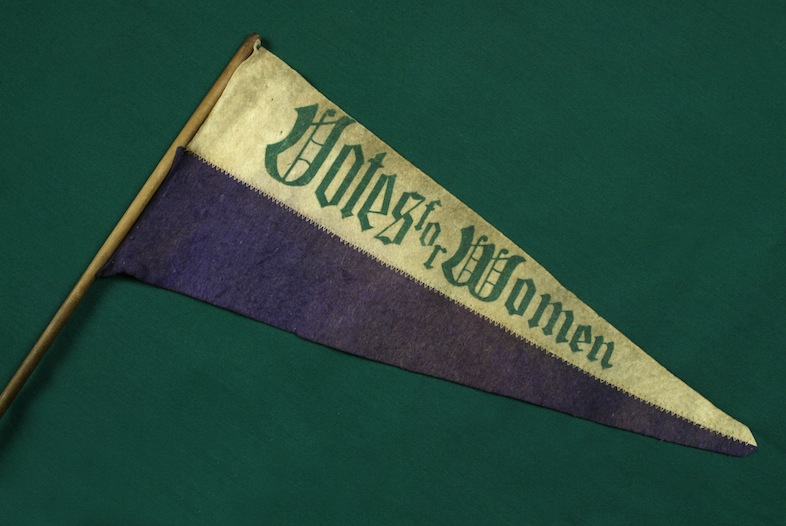
The great era of canal building in the Second Republic of Mexico (also referred to as the United States of Mexico) started with a joint project with the British. The first project was to improve the San Juan River, running between the Mexican states of Nicaragua and Costa Rica, to its origin in Lake Nicaragua. From there, a canal was build across the Rivas Canal to the Pacific, opening to traffic in 1861. While this first canal helped the British to link their Pacific interests with the Dominion of Southern America, it was only the beginning for Mexico. Mexican officials wanted a canal closer to the heart of the nation, and found investors in the United States for the great project of the Tehuantepec Canal, a canal with locks stretching over a 125 miles. This grand project was finished in 1878, and was able to handle twice the tonage of the Rivas Canal. The age was capped off with a more modest canal sponsored by a consortium of investors from Mexico, New Granada, and the United Provinces of South America that crossed the Isthmus of Panama.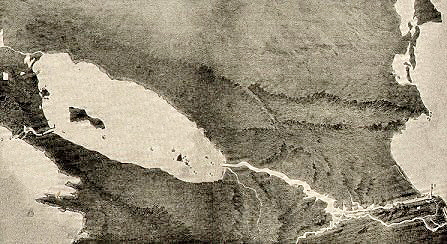
On the Centennial of the United States, two more states were admitted to the Union, on the Pacific Northwest. The MacKenzie Territory had toyed with the idea of statehood since the gold rushes of the 1850s, but tensions between Gray Islanders and the rest of the territory had as often as not derailed previous moves towards statehood. Therefore, even though their populations technically were too low for the requirement of statehood separately, Congress turned a blind eye and admitted Gray Island and MacKenzie as two states. This also was part of a series of political compromises in that year betwen the Democrats and Federalists that also brought Federal Women's Suffrage into being. The State of Gray Island was self contained on the self-named island. The borders of the State of MacKenzie included the 54th parallel to the north, the Continental Divide to the west, the 48th parallel to the south, and the Straits and Pacific Ocean to the East. MacKenzie also includes the Washington Isles.
The Flag of 1876 or the Centennial Flag contained 35 stars representing all the states to join the Union including those that joined in 1876. Ironically, this flag did not fly during the June 3rd celebrations as the last two states, MacKenzie and Gray Island, did not join the union early enough to allow for the mass production of the 35 star American flag.
The Centennial Flag:
A map of the United States of America in 1876.
The States of the Union in 1876 in Alphabetical Order:
- California
- Colorado
- Connecticut
- Delaware
- Gitchigumee
- Gray Island
- Huron
- Illinois
- Jacques
- Kentucky
- MacKenzie
- Maine
- Maryland
- Massachusetts
- Michigan
- Minnesota
- Mississippi
- Missouri
- Niobrara
- Newfoundland
- New Hampshire
- New Jersey
- New York
- Nova Scotia
- Ohio
- Ontario
- Oregon
- Pennsylvania
- Quebec
- Rhode Island
- Vermont
- Virginia
- Wabash
- Washington
- Winnepeg
In the 1868 US Presidential Election, Democratic candidate Horace Napoleon Miller, the former Governor of Illinois and Secretary of State appointed by Anthony Wayne Tullis was elected to the highest office in the land. Miller had first won fame as an American Legion General in the Western Wars against the Wild Indian tribes who refused to recognize the sovereignty and civilization brought by the United States of America. Miller's term in office was both uneventful but also uninspiring to the nation, and he was voted out of office in 1872.

The great era of canal building in the Second Republic of Mexico (also referred to as the United States of Mexico) started with a joint project with the British. The first project was to improve the San Juan River, running between the Mexican states of Nicaragua and Costa Rica, to its origin in Lake Nicaragua. From there, a canal was build across the Rivas Canal to the Pacific, opening to traffic in 1861. While this first canal helped the British to link their Pacific interests with the Dominion of Southern America, it was only the beginning for Mexico. Mexican officials wanted a canal closer to the heart of the nation, and found investors in the United States for the great project of the Tehuantepec Canal, a canal with locks stretching over a 125 miles. This grand project was finished in 1878, and was able to handle twice the tonage of the Rivas Canal. The age was capped off with a more modest canal sponsored by a consortium of investors from Mexico, New Granada, and the United Provinces of South America that crossed the Isthmus of Panama.[/QUOTE]
The personal union of Prussia and Poland went through many iterations in terms of what flags should be used in Prussia, Poland, and internationally for the two nations. However, with the King of Prussia and Poland becoming enamored of the writings of the Dane, Zeus Korsgaard, he saw himself as the embodiment of the state, and sought to knit the two nations into a Korsgaardian-style Empire. Persuant to that, he ordered the commissioning of a new flag for the Empire of Prussia-Poland, incorporating the colors and symbols of the two and of empire.
Flag of the Empire of Prussia-Poland
The Dominion of Southern America was developinga rich local tradition in food, music, and literature. While some critics in England felt that the popular culture of the Dominion was vulgar, others found it refreshing. The literature of the early Dominion was famous for the Southern Gothic novel and so-called 'Western' story, and towards the mid 19th century, a romanticism with the Plantation lifestyle, Neo-Plantationism, become popular especially among the upper classes. Robert Daley's semi-autobiographical novel, 'White Gold' was a typical example from the 1870s.
"George Tuttle sat on the veranda of the big house, enjoying his tea as he mused about the arrival of his bride to be. Anna Belle was from poor, Scotch Irish stock, but her fair skin would make up for the coarseness of her ways. George's own father had been the son of a planter and his slave-woman, but had run away to fight with the Loyalists. His surname, Tuttle, had been adopted by his father, not after the man who had sired him, but the Loyalist militia colonel who had taken him in and treated him like a man, fighting side by side for the British Empire. After the war, George's father took up trading between the Civilized Tribes of Indiana and the rest of the South. He'd found himself a half-breed squaw-bride among the Cimeroan, making George half white, a quarter native, and a quarter negro. He was thankful that so much of his good, white ancestry showed. That and his father's war service and wealth from his very successful business had bought George a fine education and entry into more polite society. George was grateful to his father, but he was a man of the land, not a trader. When he came into his inheritance on his father's death, he had bought his dream, a plantation of good cotton growing land, in West Florida; he hadn't wanted to deal with the tribal politics of Indiana. George sipped his tea as the carriage brought Anna Belle to the front of the big house. He gestured for his negro boy to play some music on his banjo. The boy was talented, son of one of his few remaining renters, negros who still clung to the land, unlike so many before who had migrated to the cities or the west. More than half of the plantation was being worked by Hindoos from the Asian subcontinent by now. He had sent the boy, Randolph, down to the Dominion capital at Baton Rouge, to learn all the new music coming out of the delta, catchy stuff that he hoped would please his new bride. She was a sweet girl. However, it would be a spell before he could take her on his arm to polite society parties. His mistress, a fine negro woman educated down in New Orleans, would take her in turn under her wing to teach her the finer points of polite society. Anna Belle swept up the steps of the veranda, a sweet smile on her face. As he stood to receive her, he thought how good life was along the Mississippi."

One of the hallmarks of the Second Elizabethan Era of the latter 19th century was the continued trend towards liberalized social trends. While some more tradition-minded commentators felt the whole of the 19th century saw a breakdown in traditional values and licentiousness, others saw it as an evolution of values as an outgrowth and successor of the Enlightenment. A part of this was the opening of the Western World to the more esoteric and erotic works of the ancient East.
The first work to make a major impact in the West was the release of the English translation of the Kamasutra (sometimes alternately spelled Kama Sutra) in 1867. Translated by Adventurer-Scholar Robert Hugh Mumby, a British gentleman born and bred in the East Midlands who made his diplomatic and academic career studying and traveling throughout the Indian subcontinent, and translated many Sanskrit and other Hindoo writings into English. His mark on the Zeitgeist of the Second Elizabethan Era, however, was made by his translation of this ancient Hindoo work by Vatsyayana. While fellow scholars also noted all the other details of Hindoo philosophy in the work, the popular press highlighted the sexual content of the work. It proved wildly popular if mildly scandalous in the British Empire and the United States, and was subsequently translated into several other European languages, especially in the West (the work was banned by the Korsgaardian regimes of the East but still German translations from the German Empire were smuggled into Prussia-Poland and Austria-Hungary, as well as underground translations in Slavic languages were made and distributed clandestinely).

The Ottoman Empire, while in the East, had aligned itself more and more with the West both politically, militarily, and culturally by the Second Elizabethan Age. When the Ottoman 'upper crust' started to see the hottest salacious trend from the West, some among them felt that the Ottoman pride demanded their own response, and in fact the Empire had their own heritage to draw upon to counter with. Court member Abd Al-Hadi, known in the West as Abdul Hadi Pasha, translated the classic Arabic work by Muhammad ibn Muhammad al-Nafzawi, The Perfumed Garden of Sensual Pleasure into English and had it published during his stay with the Ottoman legation in London in 1871. This made Abdul Hadi Pasha one of the most popular if infamous foreigners in 1870s London. The Perfumed Garden, as it was often shortened to when discussed, was much more focused on sexuality and more clinical than spiritual in tone, but was, if anything, more popular among the scandalized yet titillated public. There was one chapter of the unabridged work that was often omitted from the most common popular printings, dealing with more forbidding sexual acts for the West, though it was popular in certain underground circles.
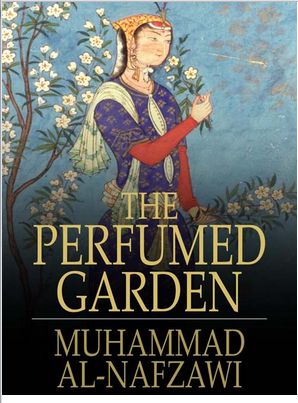
The expansion of Prussia-Poland into the Congo made many powers nervous. France especially was unhappy to see Prussia-Poland starting to found overseas colonies. France encouraged Spain in its expansion on the Congo's northern border and bolstered Portugal in her claims to the south of the Congo. The French themselves decided to forestall further Prusso-Polish claims to further lands east. The French began by negotiating a presence in Bwaga-Moyo
from which they began to move west into Central Africa.
French Garrison at Bwaga-Moyo

The efforts of Muhammad Ali placed the Ottoman Empire on the road to recovery and resurgence after the disasters of the Balkans such as the Serb Uprising and the Hellene War of Independence. Vizier Ali's successors continued his efforts to modernize the Ottoman Empire. A stream of reformers who had been fostered by Ali's tenure continued to bring changes to the Empire, emulating the reforms going on in Europe and even the Americas. Included in this modernization was also a liberalization that aligned the Ottomans more closely with the West, who helped bolster the Ottoman Empire against the Eastern European powers such as Austria-Hungary and Russia.
In addition to modernization and liberalization, the Ottomans turned their attention to revitalization and even growth to the South and West, favoring stabilization in the North and the East. In response to Western complaints, and somewhat concerned about other nations taking a more aggressive hand, in 1831 the Ottoman Empire launched a virtual re-conquest of the Barbary Coast, finally bringing this long errant part of the Ottoman Empire back under the laws of Istanbul. From their base in Egypt, the Ottomans were able to redeem Tripolitania, Tunis, and Algiers.
This resurgence of the Ottomans gave the Moroccans pause, but they were also concerned about allying with any other power which might see Morocco as a potential colony. Instead, Morocco turned to the United States of America, a nation comfortably far away, but who had developed a strong navy and had had good relations with Morocco since its birth. Morocco had been the first to recognize the USA, and had early on placed the nascent nation's merchant vessels under Moroccan protection. Now the United States would return the favor, placing Moroccan interests under US protection.
The Ottomans also finally tamed the wild tribes of the Arabian Peninsula, as well as securing the African coast of the Red Sea by 1880, part of their policy of guaranteeing the new route by sea through the Suez Canal for their British and French allies as well as Ottoman shipping.
Needless to say, this demonstration of renewed vitality also made their neighbors Persia, Russia, and Austria-Hungary nervous as well.
A mere ten years after the reversion of Hispaniola from a Dominion to a Crown Colony, the colony was on much more solid financial and governmental footing, but while the upper classes of the island welcomed this return to stability, the people of Hispaniola were a proud one, and chafed at the idea of rule from Europe. While no one was willing to go through the roller coaster ride of full governance that had been the ill-fated Dominion of Hispaniola, the idea of federation with the surrounding Dominion of Southern America now was a much more attractive prospect. The DSA after the 1840s had enjoyed unprecedented growth and a fair amount of social stability. Therefore in 1880, Hispaniola joined as a Province of the Dominion.
1880 saw the entry of two additional states to the Union.
The first state was the second to be named after a US president, the State of Adams. Niobrara and Colorado framed the southern and eastern borders of the state. The northern border continued along the Niobrara river to its origin, then followe a course due west to the Northern Platte River to its origin,then a straight line due west to the Green River which comprised the entirety of the state's western border.
The other state granted admission to the Union in 1880 was the State of Lakota. Named after a prominant (and obstinant) native tribe of the area, Lakota's eastern border was the Missouri River to where it turned north forming part of its northern border along with the entry of the Little Missouri River which then turned south to make up the upper half of the state's western border to its origin, and thne a straight line due south to the Northern Platte River.
In the election of 1872 the Federalists took back the presidency with the victory of their candidate, John Bertrand. Bertrand was the 'favorite son' of two states, born in Quebec but rising to prominence in New York. Bertrand's first term saw the height of the Grand Design period of history, and the pagentry and spectacle of the nation's Centennial in 1876, including the dedication of the twin collossi guarding the Hudson River approach to Washington, and the signing into law of Women's Suffrage for the entire nation. He easily won reelection and served out his second term in relative peace and prosperity.

The reign of Pope Pius IX was the longest on record. This turned out to be a godsend for the nascent nation of the Roman Republic (comprised of the former Papal states). Pius had shown strong sympathies to the liberal cause before the outbreak of the revolution. After a rocky start, with the compromise that saw the Pope recognized as the head of state of the new Republic, Pius would oversee decades of stability, liberalization, and modernization for the nation. One thing that endeared him to the people of the Roman Republic was his humble, simple lifestyle. He lived a personal life beyond reproach, and became a model for personal integrity for his people.
With regards to reconciling the traditions of the Church with the new spirit of liberalism sweeping through the Republic, Pope Pius IX relied on his close advisor, Rosmini-Serbati. Pius also embraced and encouraged religious (though not prosetylatizing) tolerance, and is famous for opening the Jewish Ghetto of Rome.
Pope Pius IX worked with his elected cabinet in his role as head of state to create a new demarcation between the Pope's role as secular ruler of the land while also spiritual father of an international faith. While the democratically elected representatives and officials of the state would need to pledge to recognize, support, and defend the Catholic Faith, being a Cahtolic was not a requirement of candidacy, nor even an endorsement by a priest, which had been a tradition of the old Papal States. In his role as Father of the Roman Republic, Pius encouraged the use of national funds for the establishment of a robust rail system, new schools and universities, and modernization of farming methods throughout the land.
In his role as head of the church, Pius IX was to prove a strong Marian Pope, establishing that Mary was born without original sin. He also was famous for instituting the Vatican Council which gave strict limits to when and what pronouncements of the Pope fell under infallibility, the role of the Bishops in infallibility, and noted that in the Pope's secular role, infallibility did not apply. The Vatican Council also restated in the strongest terms Pope Pius IX's own papal bull regarding the prohibition of the exclusion by veto previously held by such nations as France, Spain, and Austria. France, which while still predominantly Catholic, had in the first half of the century moved away from involvement in Church politics, and made no objection. More moderate Spain had some qualms about this, but bowed to the right of the church to set the policy for the election of the pope. However, Austria-Hungary objected vociferously, leading for a time to the expulsion of the Austrian ambassador from the Roman Republic for insulting the Church.
Over his lengthy reign, Pope Pius IX created a record number of cardinals, including several from the United States of America. Pius over his thirty some-odd years of rule stacked the College of Cardinals with liberals, much to the chagrin of conservative Austria-Hungary and Prussia-Poland, and the delight of the liberal Western nations such as France. His death in 1880 set the stage for a confrontation between the aging Church conservatives of the East and the new liberals of the church.

A map of the world circa 1880
The conclave of 1880 saw the election of the most liberal candidate to the papacy. Niccolò Cipollo, a priest who could claim descent from Africanus Scipio, was selected as pope and took the name Pius X. The elevation of the new pope was rife with controversy, however, and threatened a new schism in the Catholic Church. The Empire of Austria-Hungary attempted to use its traditional veto during the conclave, this despite the rulings during Pius IX's reign that secular powers would not be able to veto a candidate for pope. Austria-Hungary, however, used this as a pretext to claim that the papacy remained unfilled, and the Emperor directed the Austrian clergy that they would be under his protection and guidance until a proper pope could be chosen. Those clergy who would not pay obedience to the Austro-Hungarian crown were expelled from the nation. The Kaiser of Prussia-Poland followed suit immediately for his nation's Catholic clergy. Others would follow suit in the years to come, especially those who espoused Korsgaardian principles and saw this as a chance to bring the church under the control of the state.

The 19th century music of the Dominion of Southern America developed primarily out of the mixture of English, Scottish, and Irish folk music and the sounds of the former slaves who had come primarily from Western Africa, with a dash of Spanish and Indian exotic-ness. Some would later claim that the music of the South was the completion of music, combining as it does the emphasis of melody and harmony seen in European music and the stress on rhythm and timbre of Western African music. Spirituals, Hollers, Minstrelry, Country Dance, and Folk all would merge in different ways to form the base for Southern styles of music. Syncopation and Blue Notes were a hallmark of the Southern Sound. Whereas Europe and the United States eschewed black influences and continued to develop refinements of so called 'classical' music, the South embraced the mixing of styles and traditions. At first, this music was the plaything of the lower classes, with its earthy and sometimes obscene lyrics and themes, played most often in the brothels and gambling houses of the South. But eventually clever musicians found ways to adapt the lyrics to more double entendre and hid the base themes, making this music palatable to the upper classes of the Dominion, and in fact became a popular export of the DSA to Latin America, the United States, the United Kingdom, and even Western Europe. A popular dance style, merengay, came out of Hispaniola initially and spread throughout the Dominion. The music of the Western Dominion were also heavily influenced by the rich musical traditions of the Mexican Republic on its border. Performers were primarily negro or mulatto, and indeed this was a pathway to success for many of African blood from the Dominion. By the 1880s, 'Southron Music' was a popular offering of theatres and dance halls across the Western World.
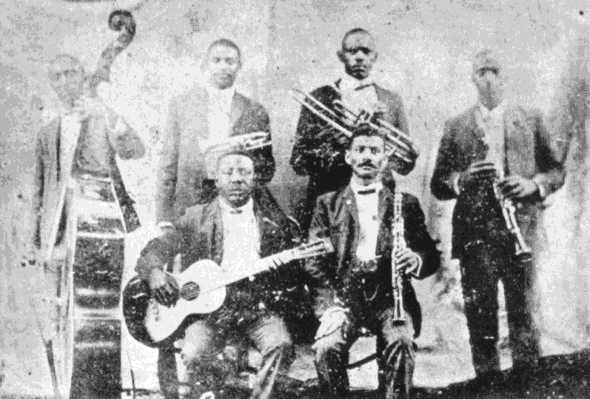
The Empire of Russia had enjoyed relative peace and stability since the end of the succession wars in 1865. Tsar Nicholas I had proven an able and popular autocrat. While socially and economically a moderate and pragmatist, when it came to political control he was an ardent upholder of absolute monarchy. In his later life, he found the philosophies of Zeus Korsgaard much to his liking, initially introduced to him by his relative the Prussian-Polish Kaisar Wilhelm. Nicholas brought the Russian Orthodox Church more intimately under his control as an organ of the state, as well a mix of social reforms designed to weaken the aristocracy in favor of the crown. They had the happy side of ending the formal practice of serfdom in Russia. In theory, all serfs became directly beholden to the state in the person of the Tsar, but in practice this gained them a modicum of autonomy, and though they still had to depend on the landed aristocracy for access to the land. This in effect made the tsar even more popular with the people, though it did little to improve his standing with the nobility. On the other hand, his formation of a secret police to deal with dissident nobles did much to keep them in line. The several assassination attempts during his reign were almost exclusively due to the plotting of members of the aristocracy. His ability to survive as well as his hard line towards dissenters among the aristocracy earned him the sobriquet of the Steel Tsar. Tsar Nicholas was also lavish in his rewards for loyalty and service to the crown for nobles who fell in line with his regime. By the 1880s he had a compliant aristocracy (due to attrition if nothing else), a religion that served his needs, and a grateful populace. Especially popular had been his patronage of infrastructure projects and extension of education among the commoners.
In line with his adoption of a more autocratic and Korsgaardian style of rule, Tsar Nicholas banned the old merchant flag of Russia that many had used for representing the nation and instead made his personal standard with the additions of bands of red and black (common 'Korsgaardian' colors) as the official banner of the Russian Empire.
The old, proscribed merchant flag of Russia
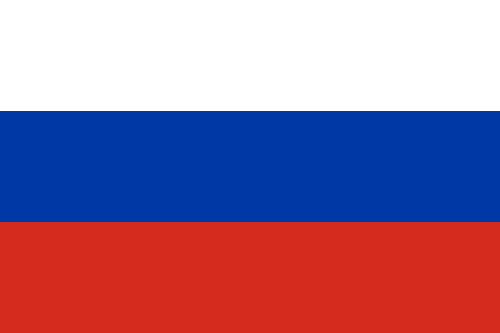
The official flag of Tsarist Russia
The Western World, from British Patagonia to Gitchigumee, from Avalon to Germany, had enjoyed a generation of essentially unbroken period of growth, prosperity, and advancement from after the end of the Liberal War around 1855, to the beginning of the 1880s. The great liberal nations of the world; the Americans, the Mexicans, the Grenadans, the South Americans, the British, the French, the Germans, even the nations of the Hispanic and Italic peninsulas, had enjoyed unrestricted growth. The more eastern and oriental powers had done nearly as well. Many of these nations had embarked on ambitious building projects, creating the great canals, bridges, railroads, and artworks of the second half of the 19th century. This time would later be called the Era of Grand Design.

The Grand Design came crashing down in the Panic of 1881. It started in the banking houses of Germany, but quickly spread to Paris, London, New York, all the great centers of trade. Bank runs were rife, and many businesses collapsed in the puncturing of the massive speculative bubble that had formed over the past 25 years. Whole governments were brought to the verge of bankruptcy by the financial crisis. Particularly hard hit was Mexico, which had already struggled with the burden of overbuilding of canals across the nation. The nations of the east, Prussia-Poland, Austria-Hungary, Russia, were less impacted, perhaps because they had not risen so high, or some suggested that it was their embrasure of Korsgaardianism which allowed them to weather the economic typhoon better than their western counterparts. However, it would be a long, long time for all the Americas and European nations before they reached the same level of affluence that they had enjoyed in the 1870s.
The rise of unions in the Western World of the 19th century was a slow one.
Unions in essence had been banned in Europe since the Middle Ages. In the United States of America, it had not been specfically banned, but were also somewhat counter to the individualist spirit of the nation. The Reform Revolution in the United Kingdom also brought in a legalization of unions along with other reforms. The union movement mixed with those of the friendly societies for the first half of the 19th century. Two different trends in unionism were seen in this time period, the development of the Trade Unions that were fairly restrictive societies limited to skilled workers of a specific trade, such as carpentry, and the development of the Work Union, that usually were much more inclusive, reaching out to unskilled workers of all types. Whereas the Trade Unions used their skills as negotiating tools, the Work Unions used numbers and internal quality controls (screening members, guaranteeing good behavior of union members, etc.) to gain concessions in the workplace. These union models began to slowly grow in concert with the development of more industry in the Western World, though it only made slight inroads in more agricultural domains and communities. These types of unions also developed in Latin America, Scandinavia, the Lowlands, Germany, France, the Iberian Peninsula, and the Italian Peninsula. To a lesser degree they even propagated in the Ottoman Empire.
However, in the Eastern block, union movements were crushed, first by the monarchs and the nobility, and then as more Korsgaardian principles developed, by the state. However, whereas the old order would simply squash any signs of leadership among the working classes, the Korsgaardian regimes replaced unions with state organized labour brotherhoods that provided some of the same benefits of the independent unions of the West. In Korsgaardian states, the ruler acted as arbitor in any dispute between owners and workers, and woe betide either side that did not acquiesce to the wisdom of the leader.
The economic turmoil of the 1880s saw unionism in the west take more aggressive and strident tacks to negotiation, especially the Worker Unions that implemented work stoppages when employers refused to provide wages. The unions were as often as not broken by the use of non-union workers, who in the economic climate of the times were plentiful and hungry for work. However, employers often found that yesterday's non-unionized worker became today's new recruit for the unions, as they found the wages and conditions in some factories barely better than those of unemployment.
The Federalists managed to hold the presidency in the open election of 1880, much to the misfortune of incoming president James Blunt. Blunt was born in Maine, but made his career in the state of Ohio, rising eventually to the governorship of that state, as in the latter half of the 19th century the formerly staunch Democratic state had become a battleground for the Democrats and Federalists. While President Blunt was a good man, his administration was devoured by the Great Panic of 1881 and the subsequent economic crisis in the nation and the world. He also had to deal with increasing conflicts between labor and business as businesses stove to squeeze whatever profit they could out of an increasingly desperate workforce, who nonetheless banded together to protect their jobs and some degree of dignity and standard of living. It is doubtful that any president could have remained in office in these turbulent times, and Blunt barely fought off a challenge for his own party's nomination, only to be defeated by the Democrats in the presidential election of 1884.
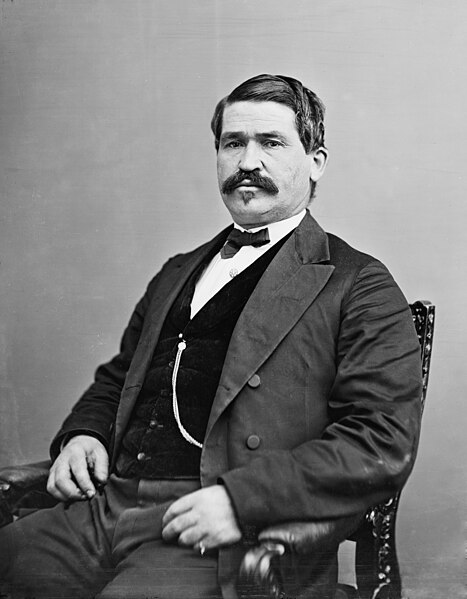
The economic downturn in the world led to several powers seeking more economic resources in the form of increased trade partners in the world, especially in Africa. Several powers expanded or even established for the first time footholds on the African continent. Some more philosophical souls in the Western World decried the practice, calling it a form of parasitism on less advanced nations. Most, however, saw it as a tool to crawl out of the economic tailspin of the 1880s and as a form of exerting national pride.
Africa circa 1885:
There had been speculative history written as far back as antiquity, but sporadically and was not seen as a genre proper unitl the 19th century. The French were the earliest in the 19th century to start seriously writing speculative fiction, mostly about worlds where Napoleon had not died of his wounds, some seeing him go on to further victories and some seeing him being tried by the victorious powers and executed.
In the English-speaking world, however, the real birth of speculative fiction did not take place until after the Slaver Uprising. The earliest work of literary note was written by a Southron expatriot Carl Heartwell. Heartwell had been an ardent Confederationist, and migrated to the United States after the collapse of the Confederation. His work cleverly postulated the failure of our American Revolution, leading to the death of almost all the familiar American founding fathers, and the subsequent retained loyalty of the 'Yankees' of Northern America whereas an expanded British Southern America under the leadership of a young and dashing Andrew Jackson, among others, breaks away from the British Empire and forms their own independent nation. The author saw his slavocrat republic as a realization of Plato's vision of a republic, and thus the name of the work, Plato's America. While seen by some as a simple exercise in wishful thinking, most acknowledge it as the first pioneering work in speculative fiction.
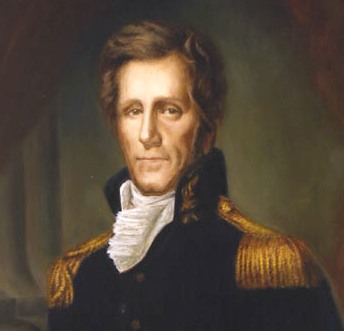
The other two major works of 19th century speculative history were from a different political perspective and took a different tack.
American David Weber wrote the quirky epic, The Course of Human Events. It foresees a more amicable separation between British North America and the United Kingdom, if not the British Empire per se, in his work where a North American kingdom is founded peacefully under a scion of the British throne. The New World kingdom thus created takes its name from the Pacific Province of the Dominion of Southern America, Albion.

Whereas Weber's work has its quirks (as do most of the genre), the last great speculative history work of the 19th century, A Loyal North, was published right after the Panic of 1881. Penned by Cantab Dr. Thomas Anderson, this British work of speculative history may have been partly inspired by the opening premise of The Course of Human Events, though the author never verified this. However, Anderson's work takes quirky to whole new levels and in fact interjects this work of speculative history with elements of scientific fiction such as projecting the events of the tale far into the 20th century, and having interludes with a history jumping team of scientists and soldiers exploring this timeline, labeled timeline 'L', clearly referring to the Loyal North title. The loyalty of this North is somewhat questionable as again there is a not entirely amicable break between British America and the United Kingdom. One interesting point here is the incorporation of the Washington family into the cadet branch of the British Royal Family which becomes the Royal family of this New World Kingdom. While the story starts off initially with a rather innocuous premise, there is a continued undertone of foreboding and darkness to the tale. Some critics have seen the work as an indictment of Liberalism and thus a subversive pro-Korsgaardian work, though other critics have suggested that it is actually a cautionary tale of the excesses of all political system. Most agree, however, that it is best seen as a rip-roaring, rich, complex tapestry of a tale. Of particular note of interest is the extrapolation of the old British Colonial borders to rather extreme extents.

The 1870s and 1880s saw a number of cheap, escapist publications for the masses in the Western World. One of the most popular in the British Empire (and somewhat controversial) was the fictionalized, serialized adventures of the famed Anglo-African unit, the Sable Legion. After its explosive early days in North America and the Caribbean, the Sable Legion became a fixture in the British sphere of Africa, especially in West Africa and South Africa. One of their most famous exploits of this time was the 'Hunt for the Lion Men', a cannibal murder gang.

ADVENTURES OF THE SABLE LEGION
The actions of the Austro-Hungarians and Prussian-Poles toward Pope Pius X were the most egregious examples of Korsgaardian regimes taking advantage of the Austro-Hungarian denial of legitimacy, but not the only ones. At first, Pope Pius X, though furious, listened to the counsel of the Vatican to address the issue with patience. He issued first entreaties appealing to the universal brotherhood of the Catholic Church. Many of the clergy in Eastern Europe stayed silent, hoping the powers would work out their issues with the Holy Father. The few who spoke in favor of the state's position on the Pope found themselves richly rewarded and their pet projects favored by patronage. The few who dared raise their voices against the state in support of the Pope, if foreign-born found themselves deported, but if native to the nation often as not simply disappeared. The Pope's outrage when this pattern of disappearances was legendary. He gave an ultimatum to the Austro-Hungarian Emperor to renounce his stance against the Pope and produce his supporters (a similar letter was sent to the Prussian-Polish Kaiser, but since it was a Catholic Emperor who was seen as the instigator and poor legal fig-leaf of legitimacy the Korsgaardians had, the ultimatum was primarily addressed to him). The Emperor dismissed the letter by stating that he did not recognize the name on it (Pius X). In 1883, after years of diplomatic wrangling and accusation and counter-accusation, the Pope finally lost patience and excommunicated the Emperor of Austria-Hungary. He merely ignored the ruling as invalid. By then, the clergy had learned that Austria-Hungary was a Catholic nation under the Emperor's protection until a 'proper' conclave and election was held for Pope, recognizing Austria-Hungary's 'God-given duty' to screen out 'questionable' choices for the Papacy. In Prussia-Poland, the Kaiser appointed the very popular Primate of Poland as the protector of the Catholic faith in Prussia-Poland until 'a legitimate Pope could be certified'. While the Primate had been an appointee of the late Pius IX, he had been won over to the Kaiser's side by his elevation of the Polish (and Catholic) people of his realm to a respected partner with Prussians in the establishment of the modern (Korsgaardian) state.
Pope Pius X


The extension of the parliamentary vote in the United Kingdom developed gradually over the 19th century. The first major step was the extension of the franchise during the Reform movement of the 1830s. However, the majority of men in the United Kingdom still were ineligible to vote. However, for women the situation was even more dire as they were completely barred from the franchise. The rising female suffrage movement in the more progressive United States of America in the 1840s and 1850s sparked some muted calls in the UK for some form of suffrage for women, though they tended to be lost in the greater movement to expand male suffrage. It was only with the crowning of Elizabeth II at the end of the 1850s, and her subsequent patronage of the rights and protections of women that these issues gained any real traction in the British Empire. The Reform Act of 1864 extended further the franchise for men, but also saw widows and spinsters who met age and property requirements gain the franchise. In part to honor 25th anniversary of Elizabeth II's coronation, but also to help lighten the mood in the nation given the financial turmoil of the times, the Reform Act of 1883 not only greatly increased the male franchise so that for the first time the majority of the population could vote, but it also put women on equal footing with men for the franchise.
Last edited: